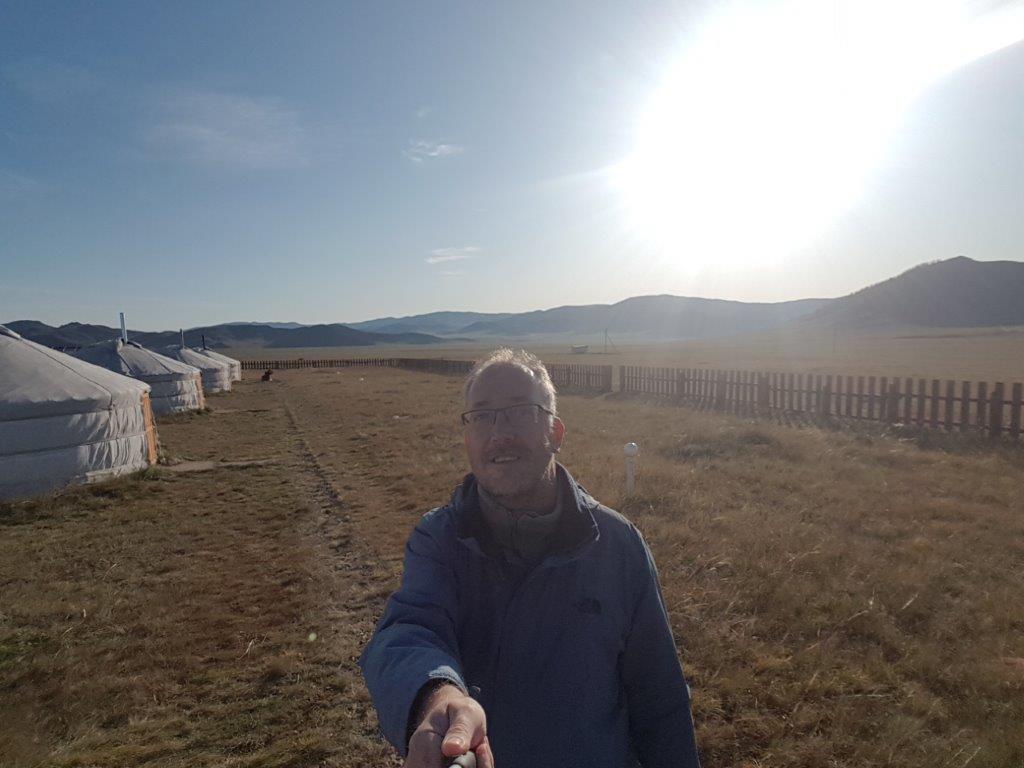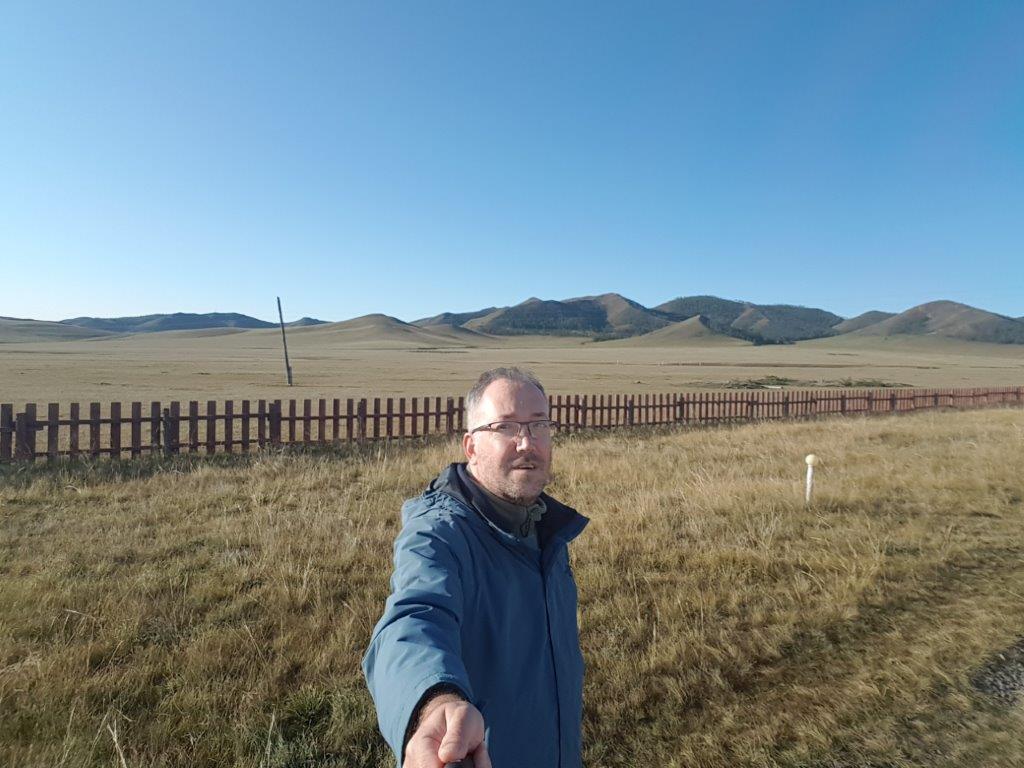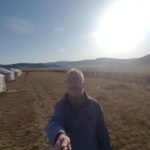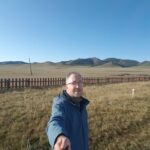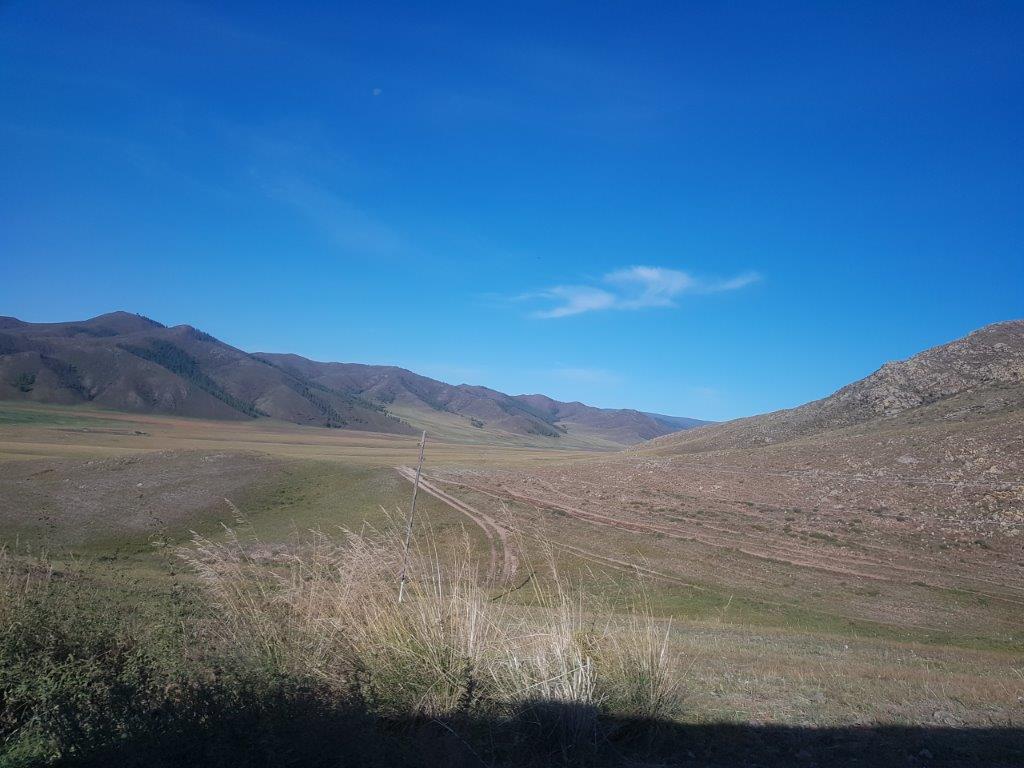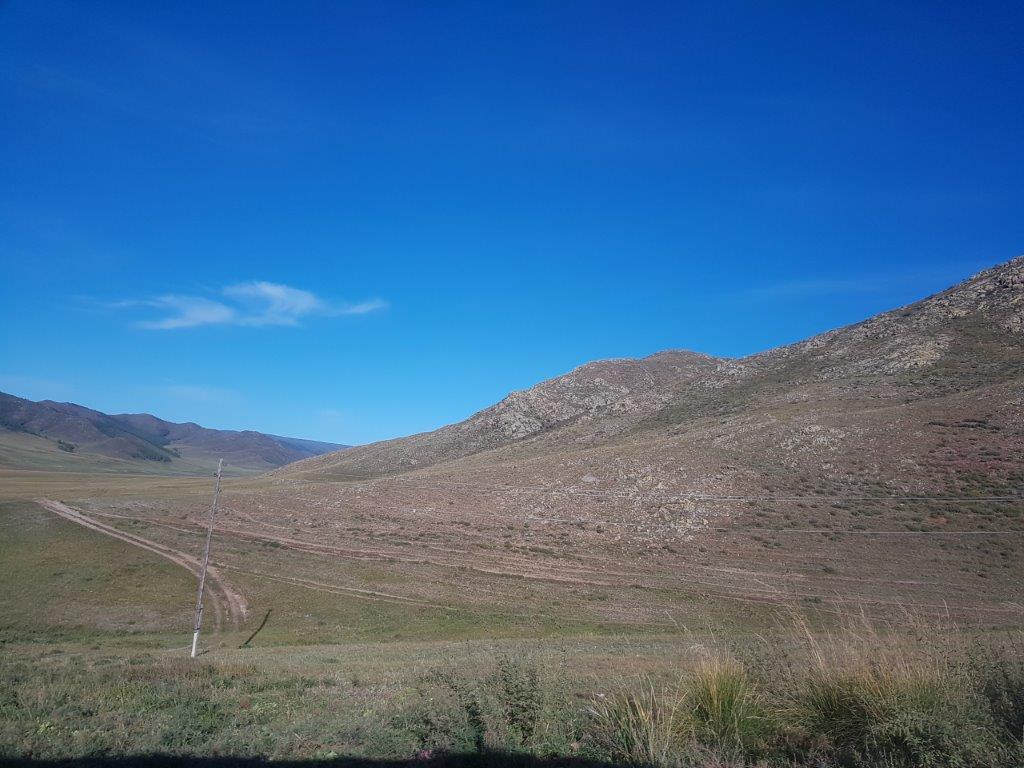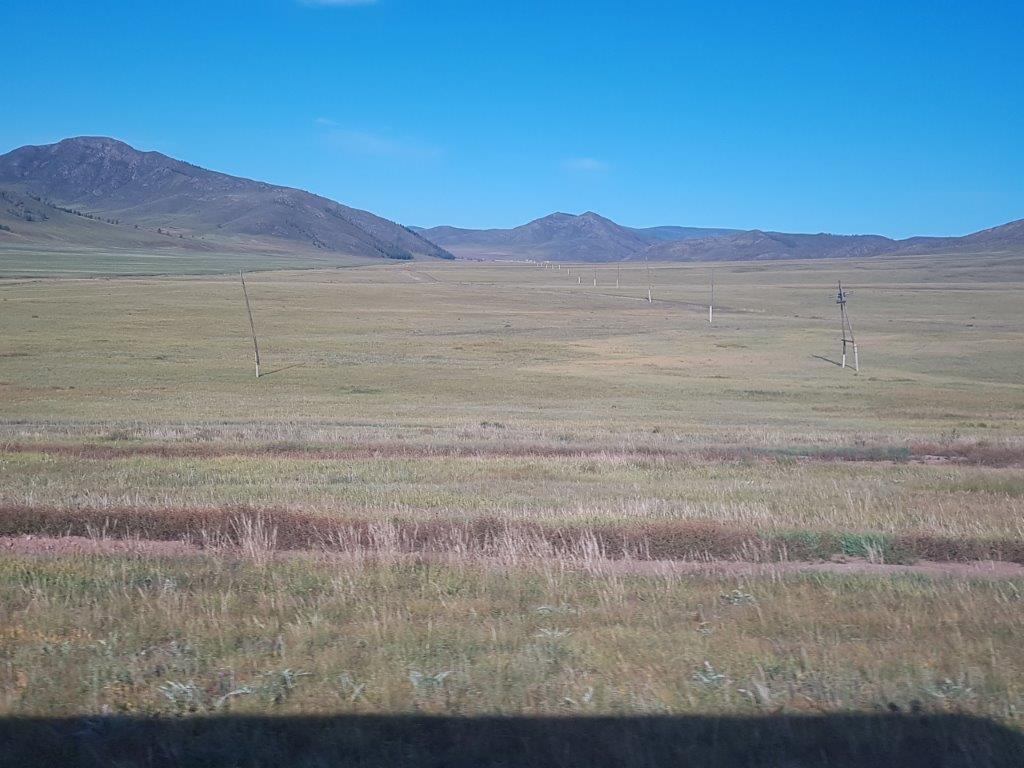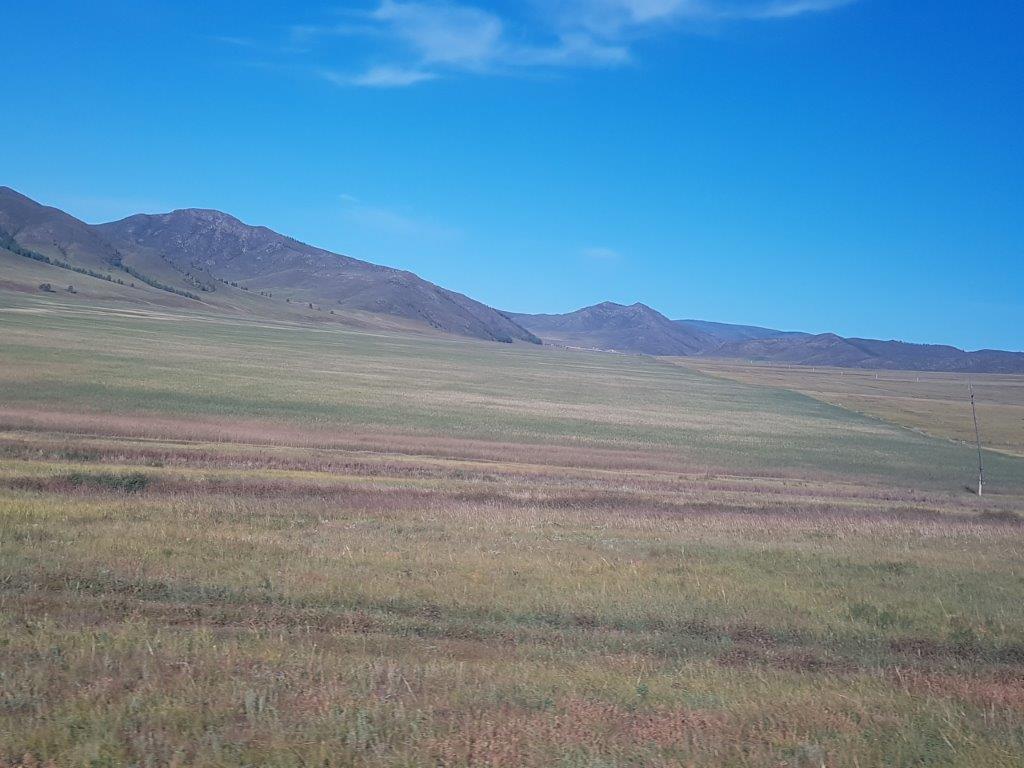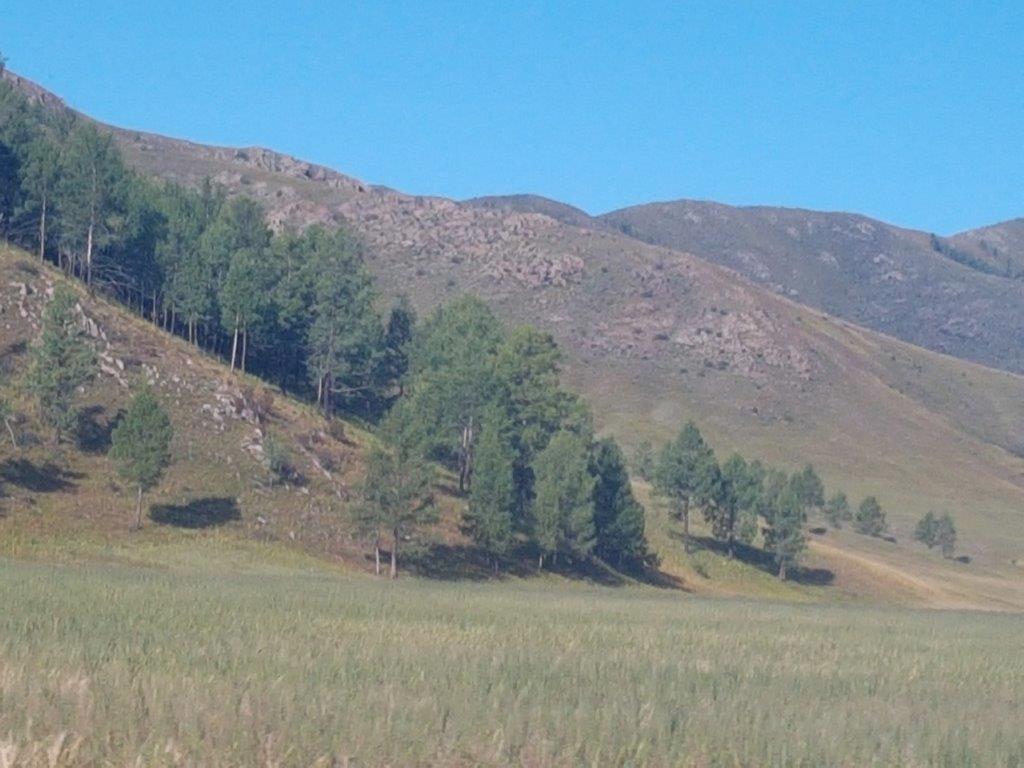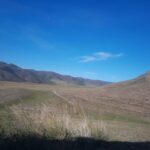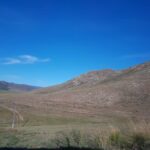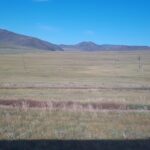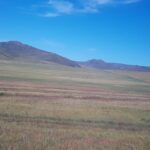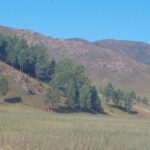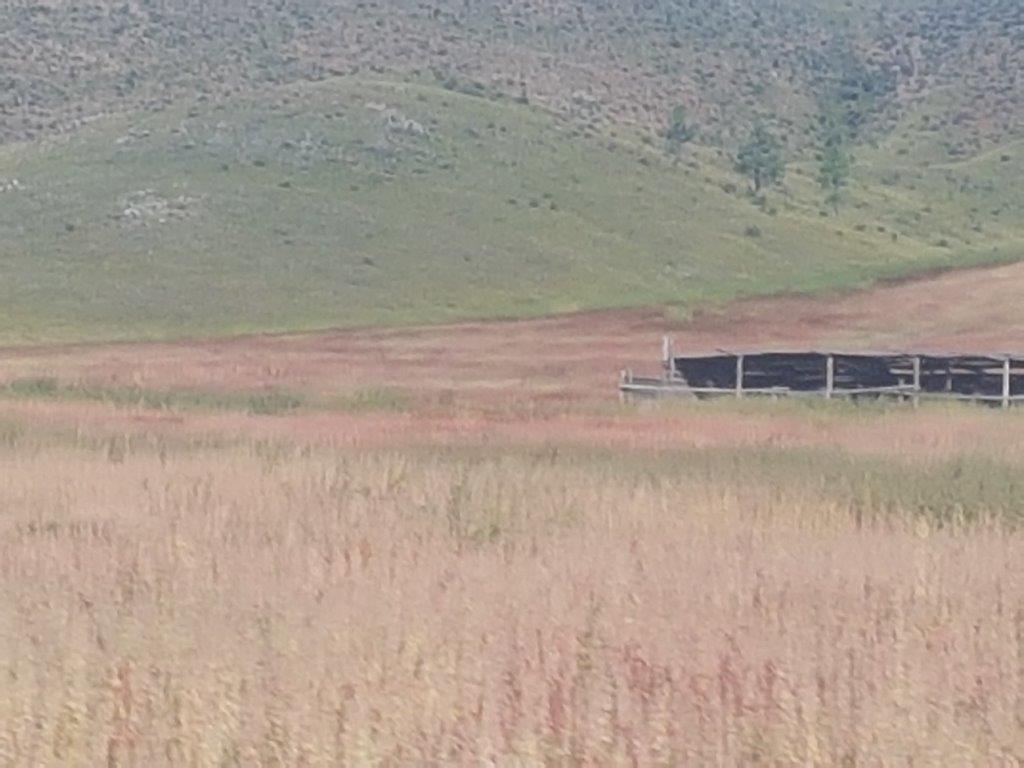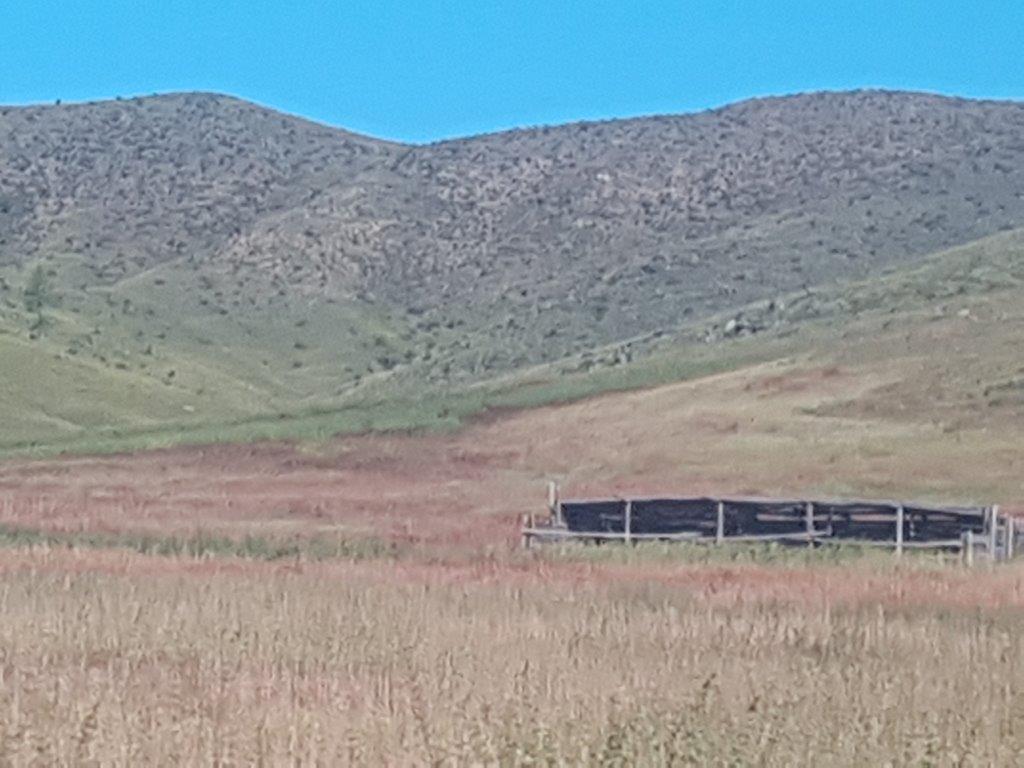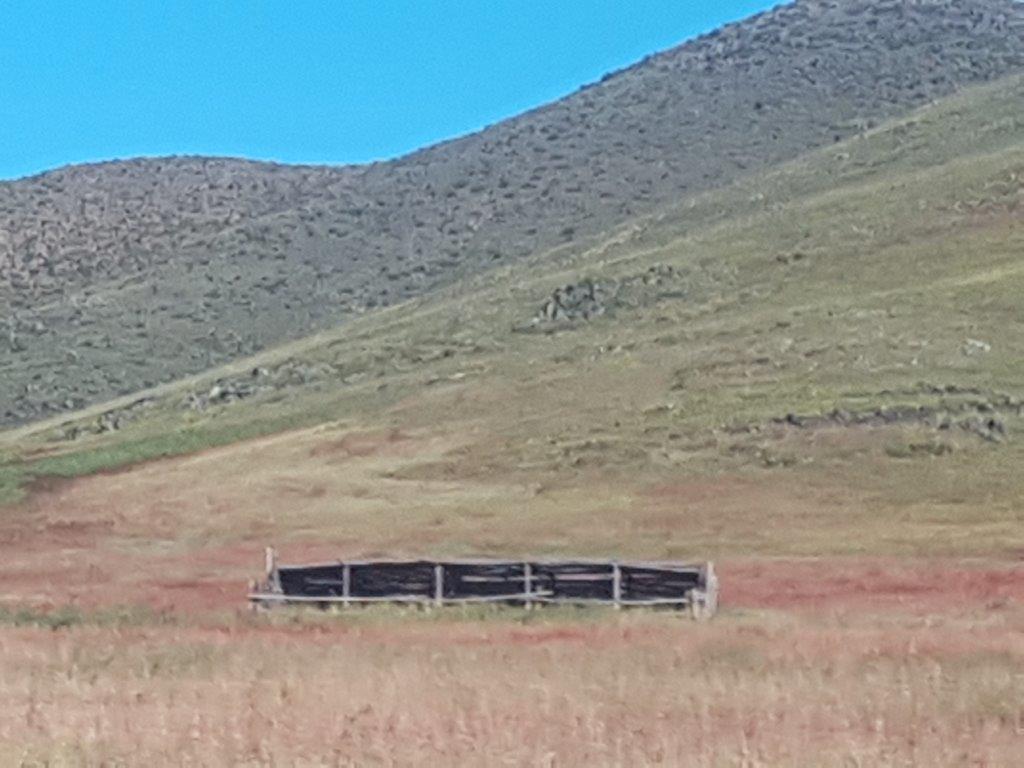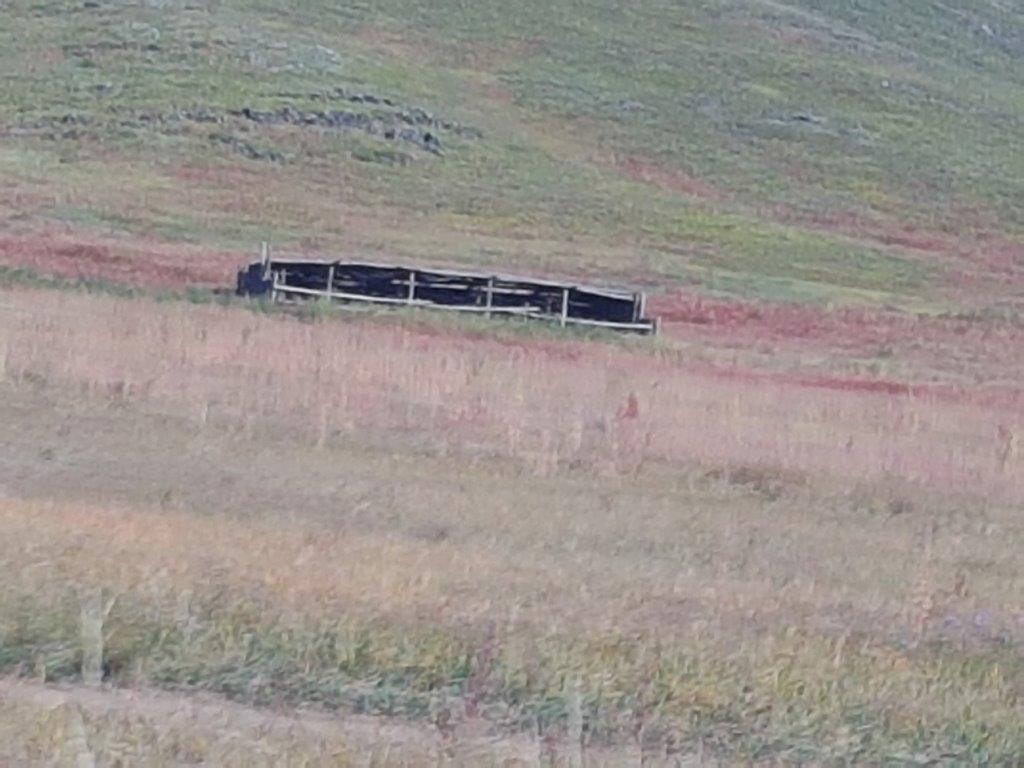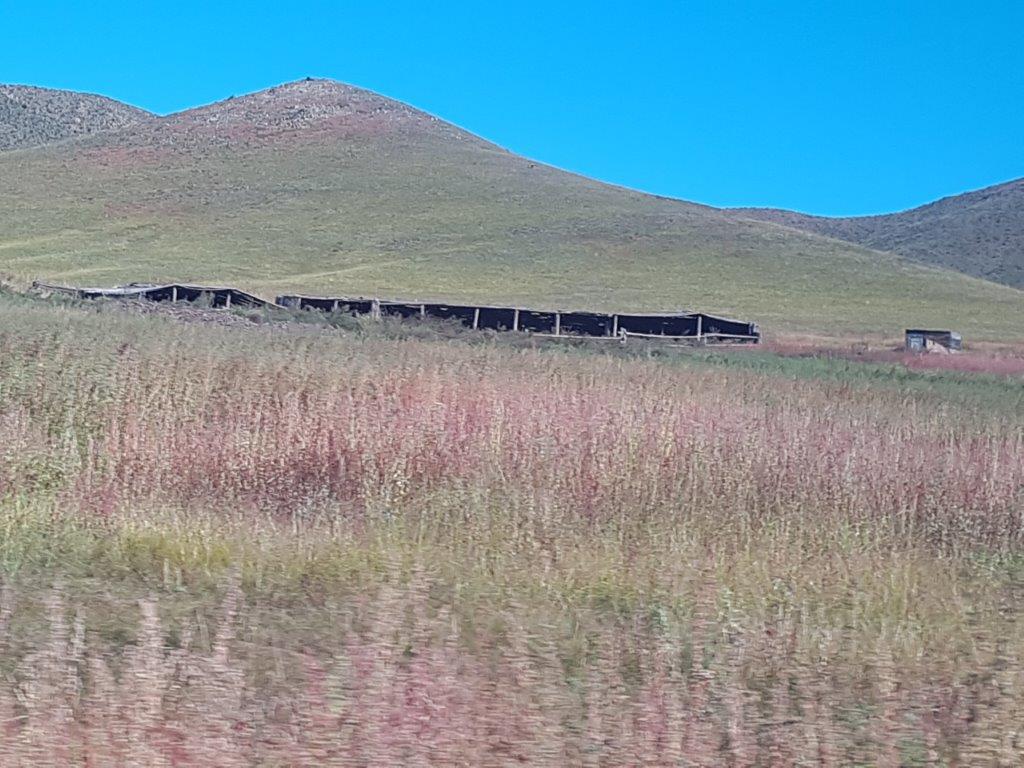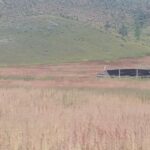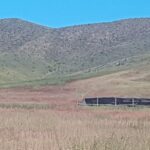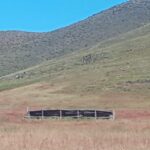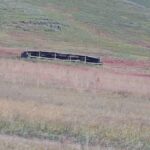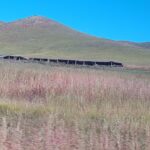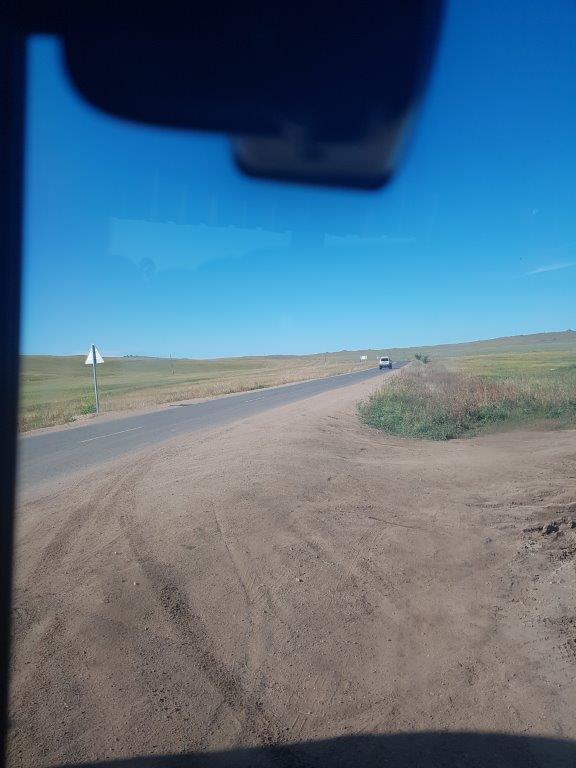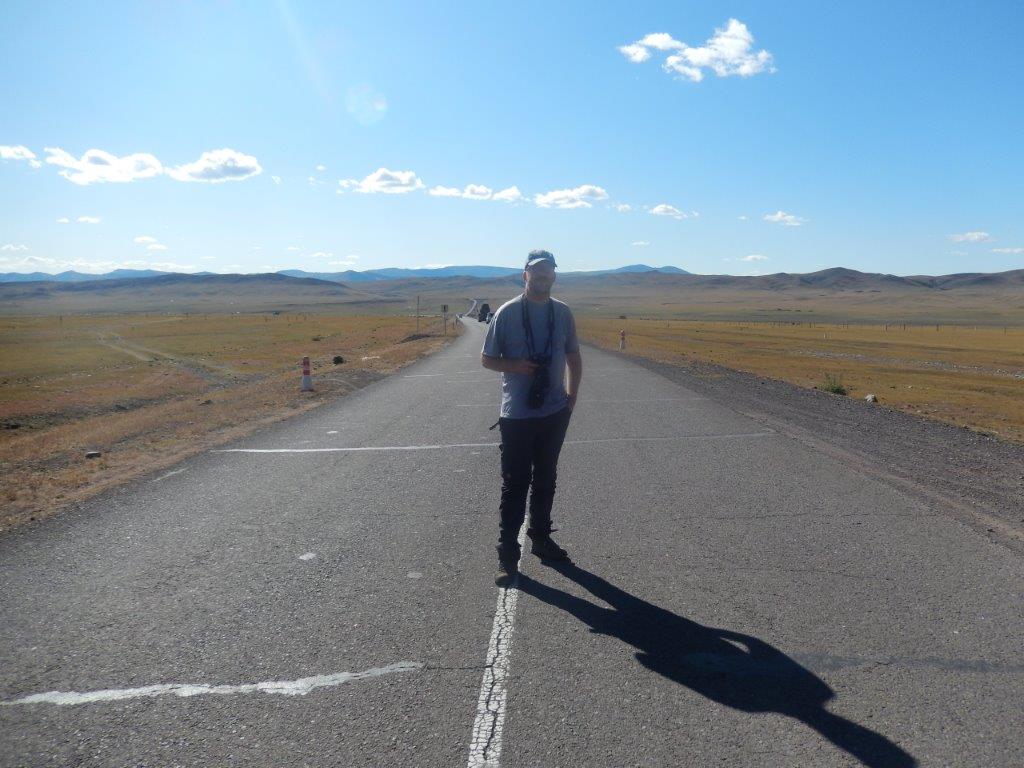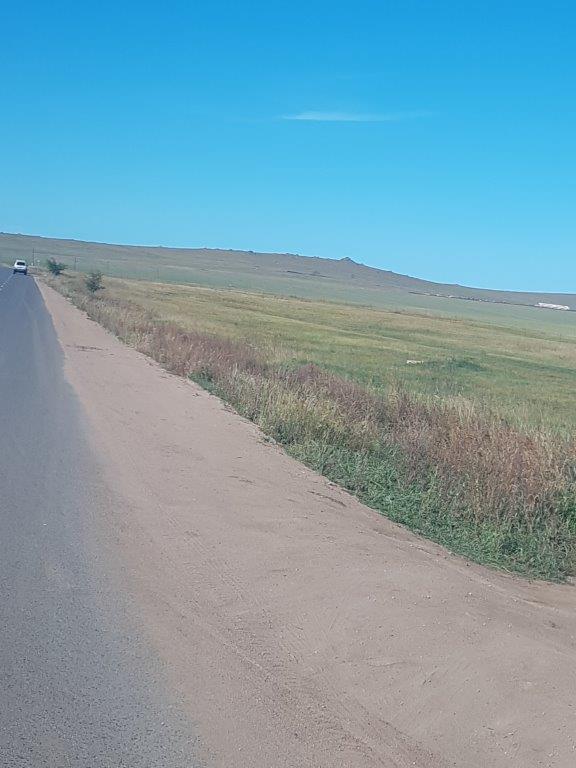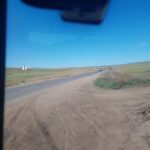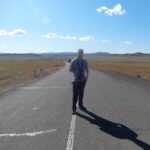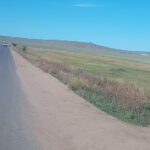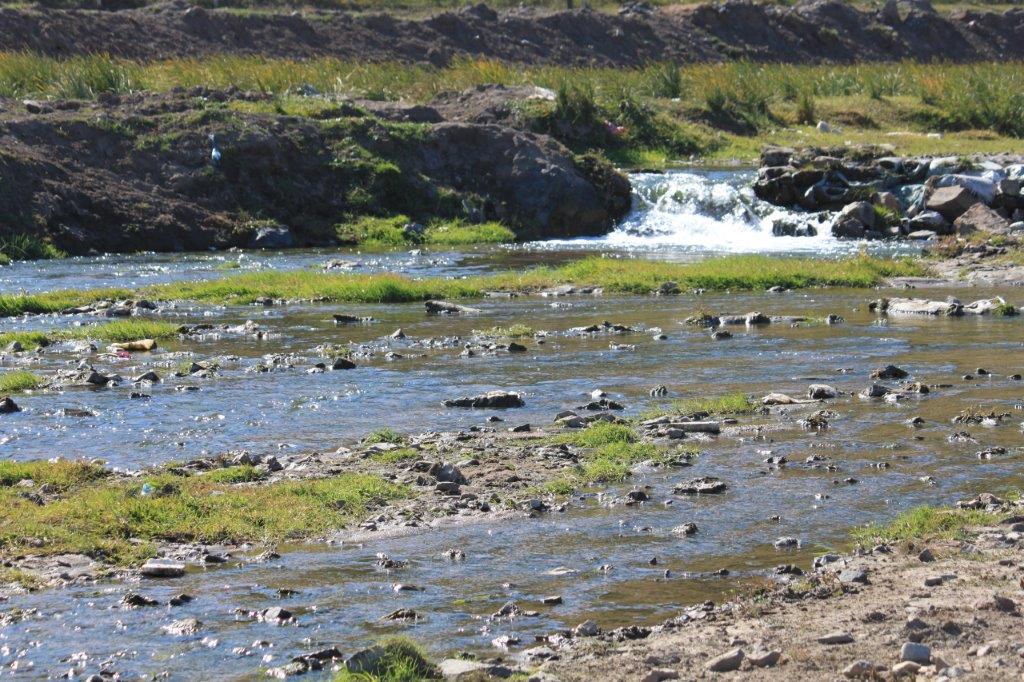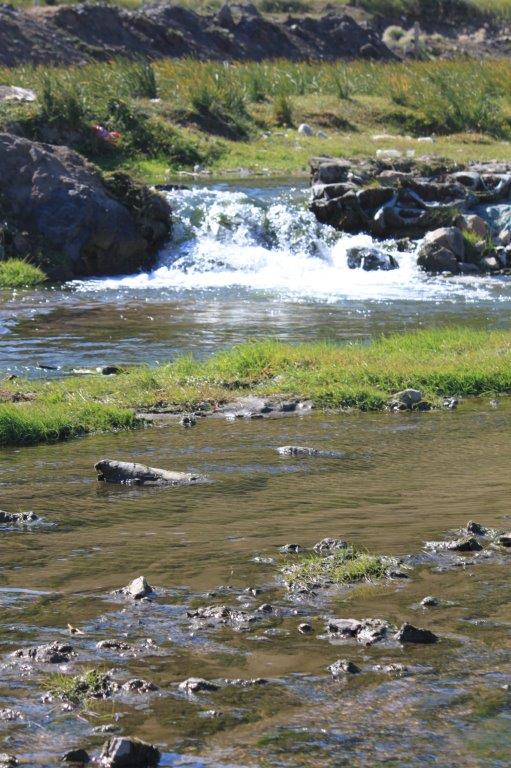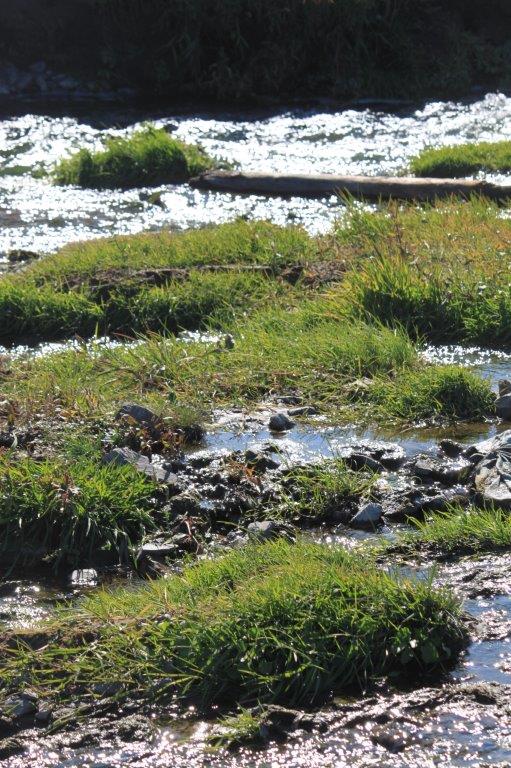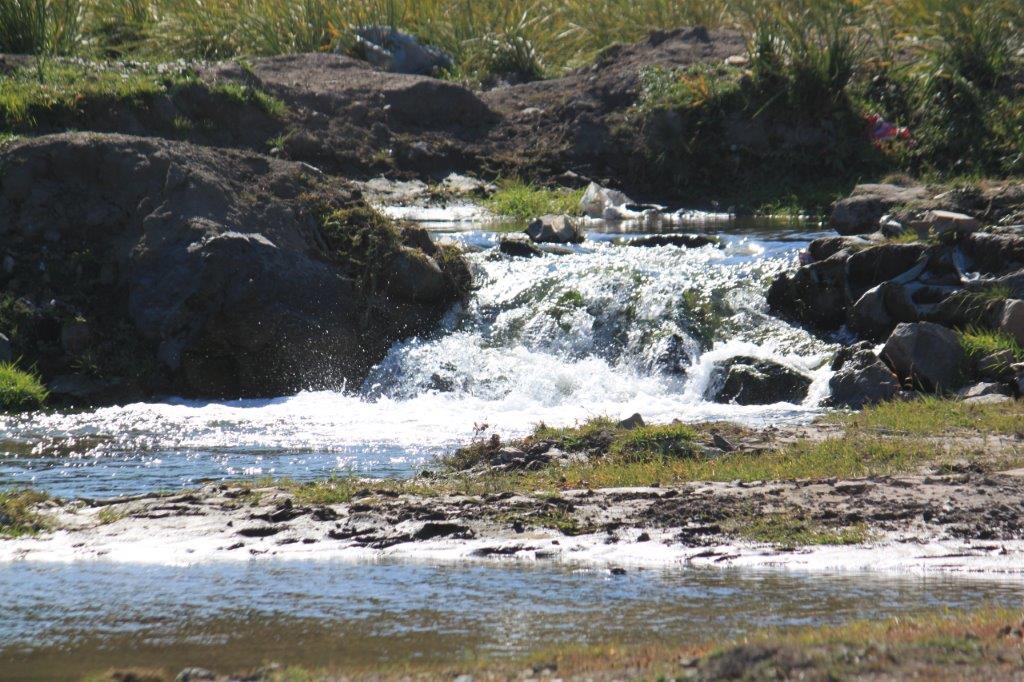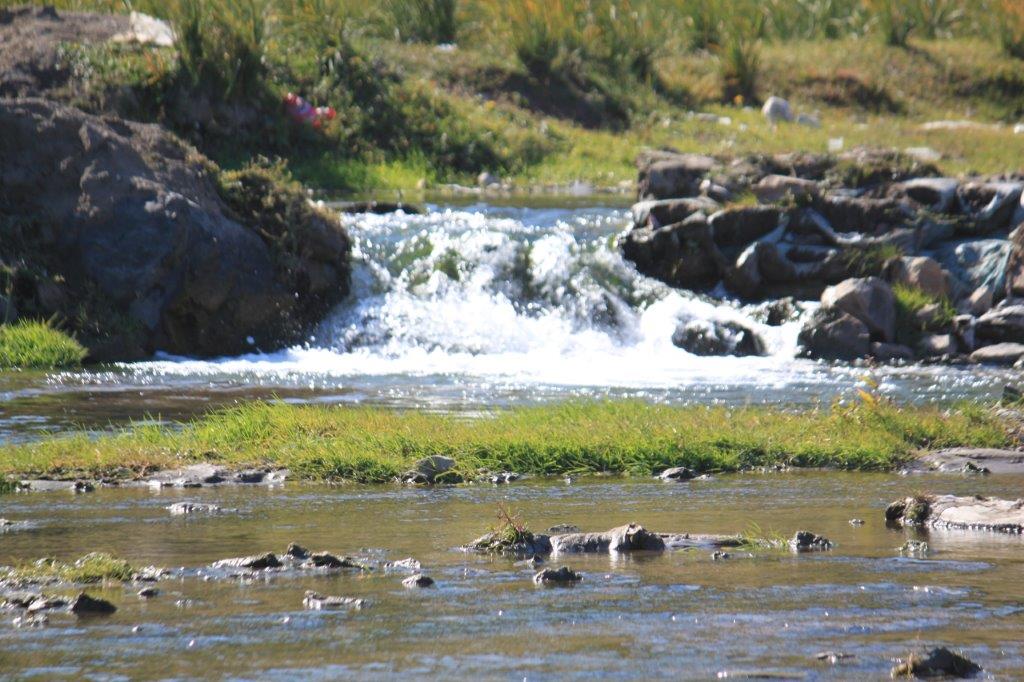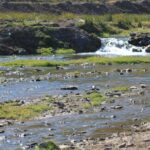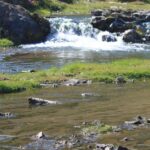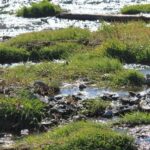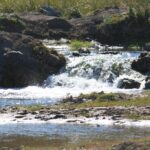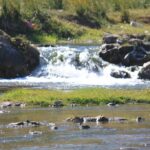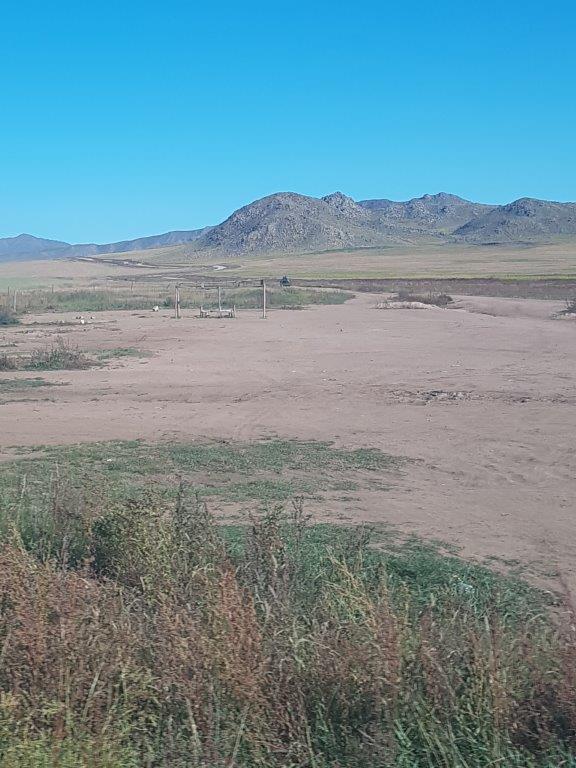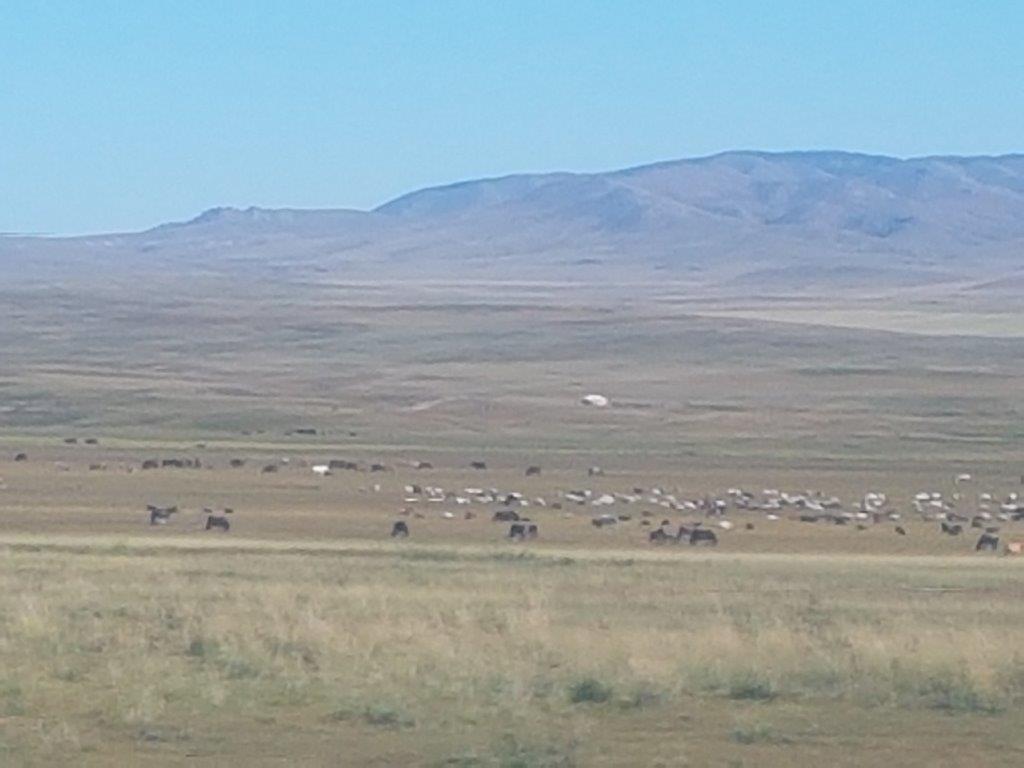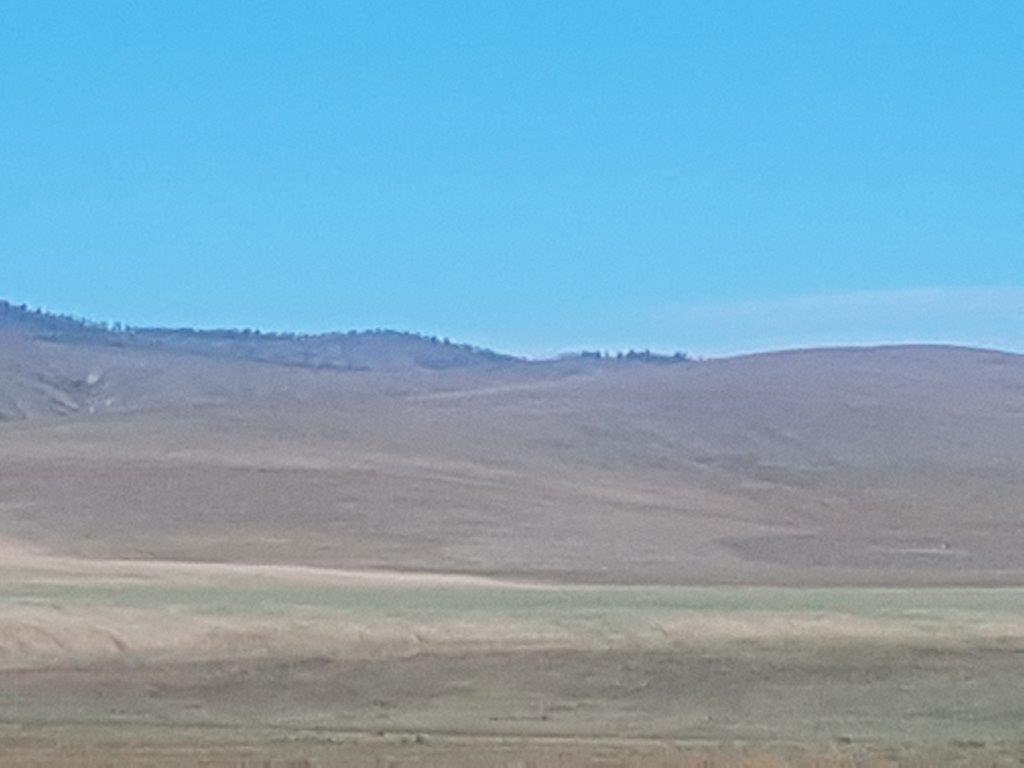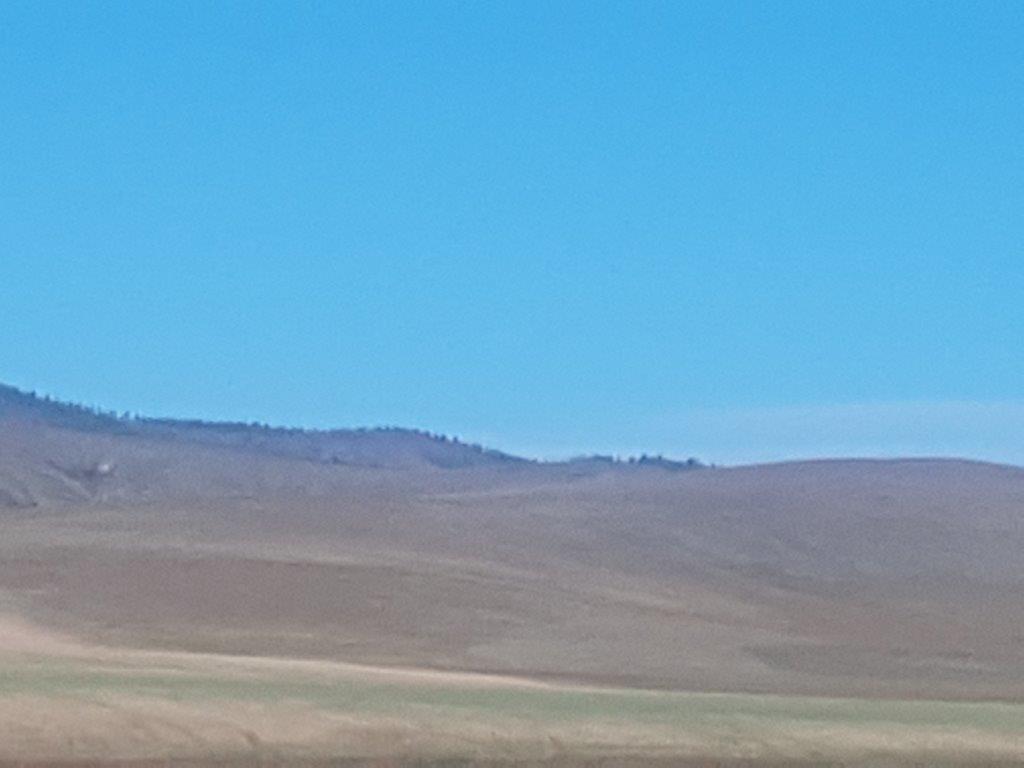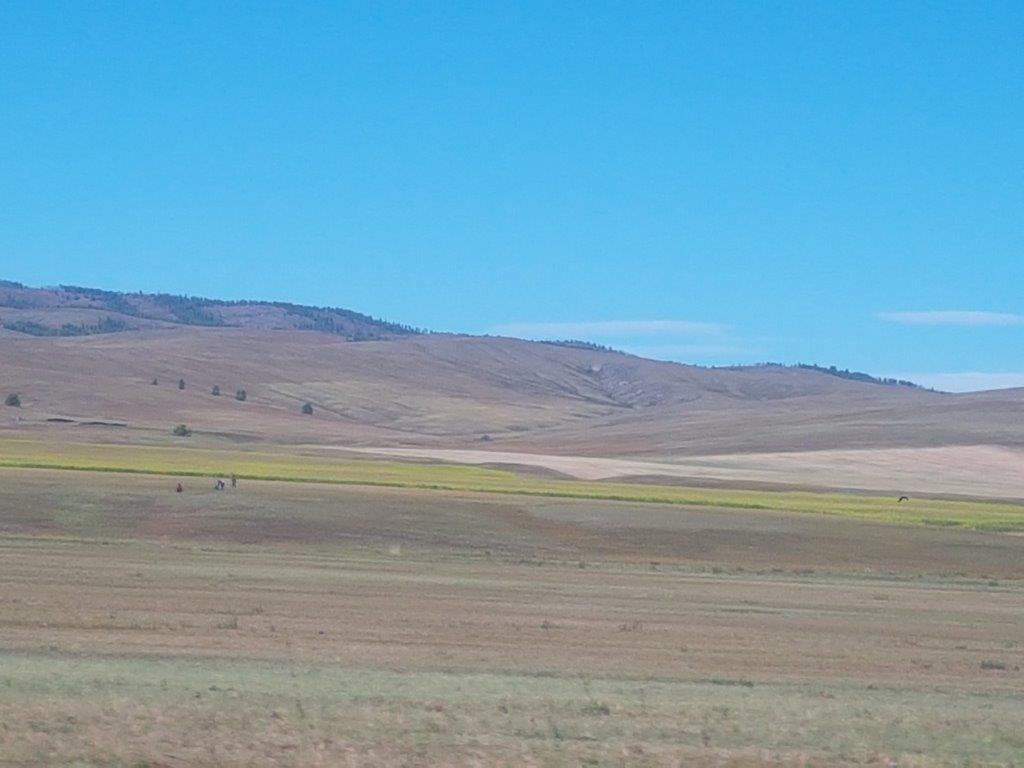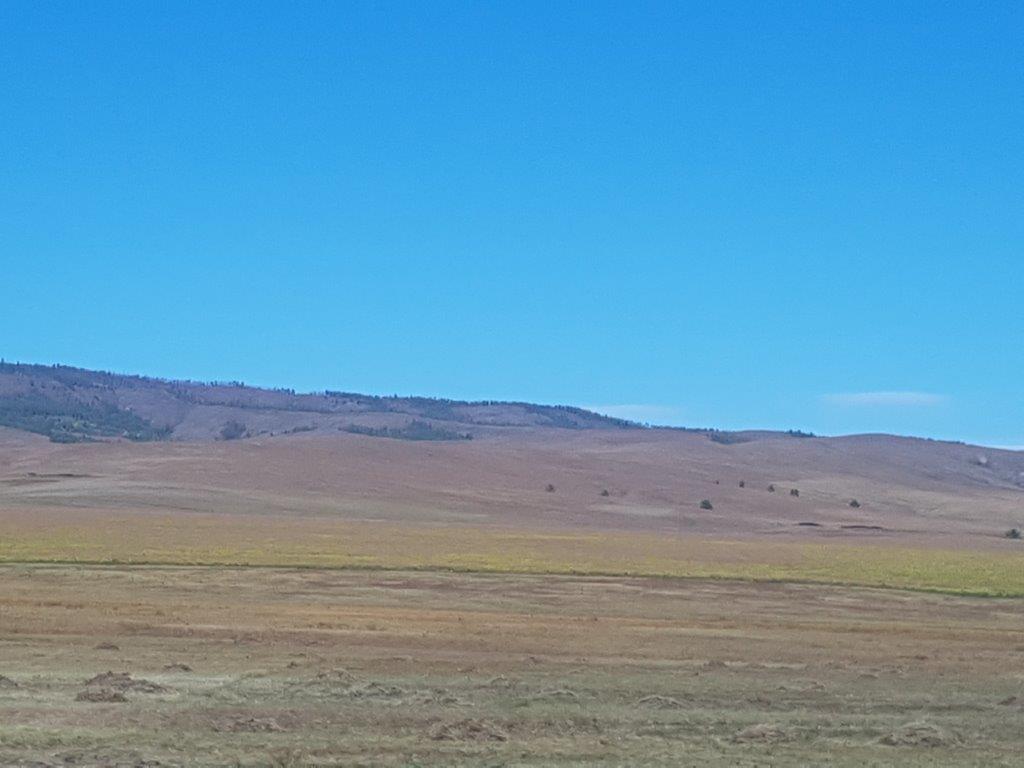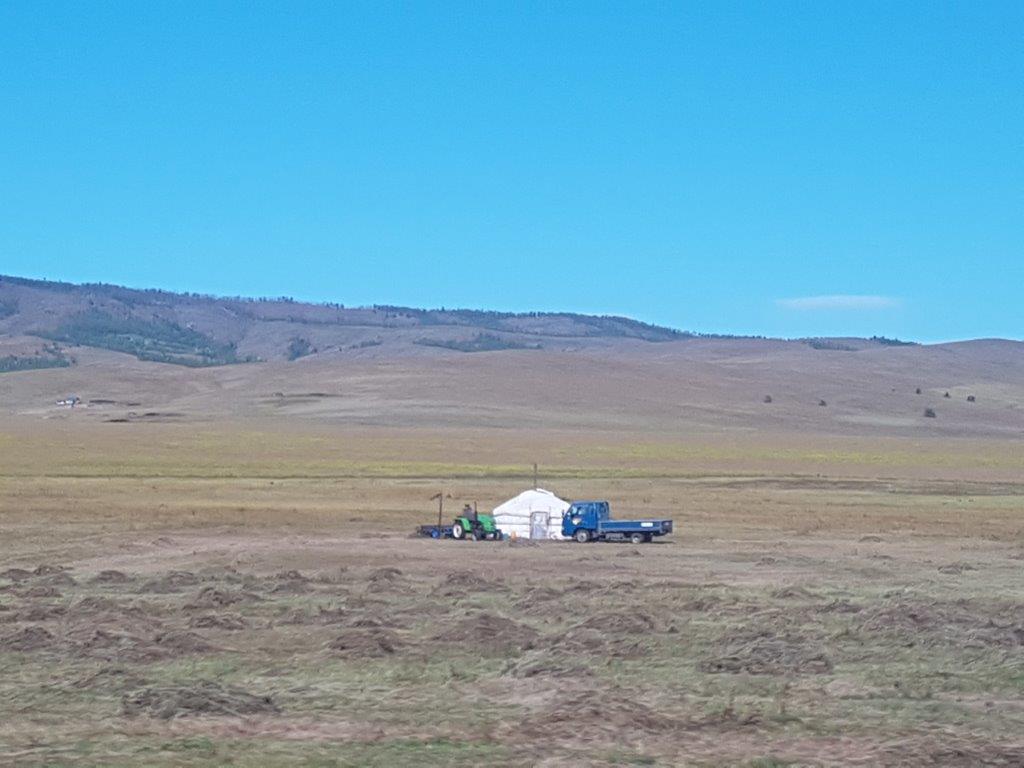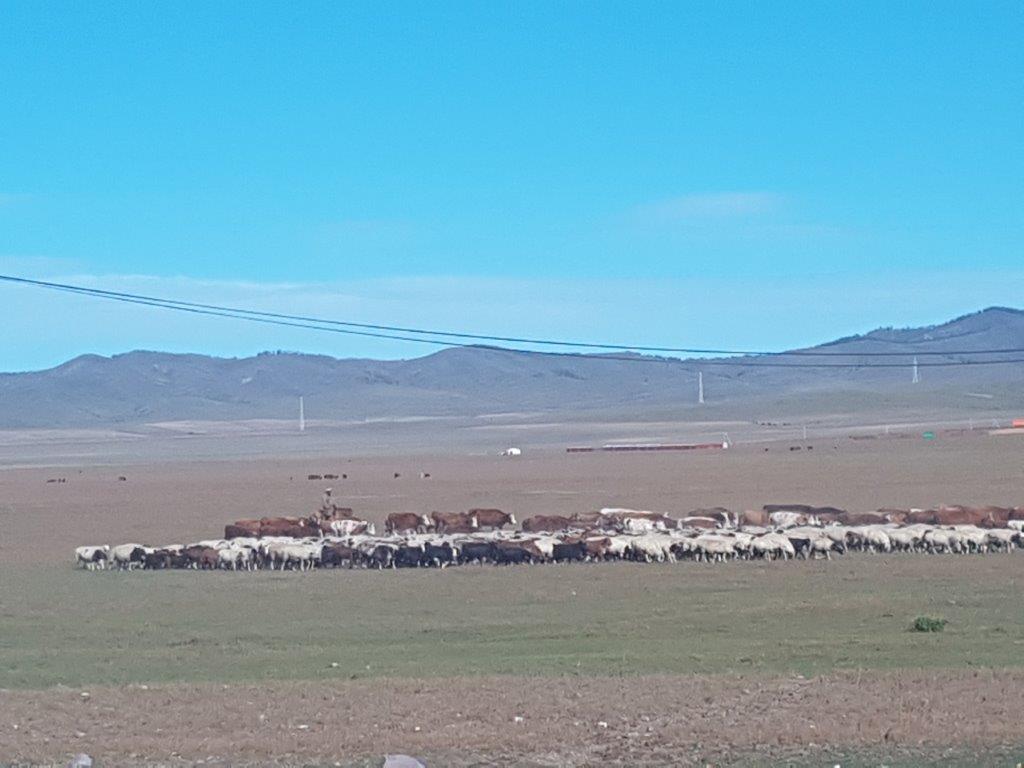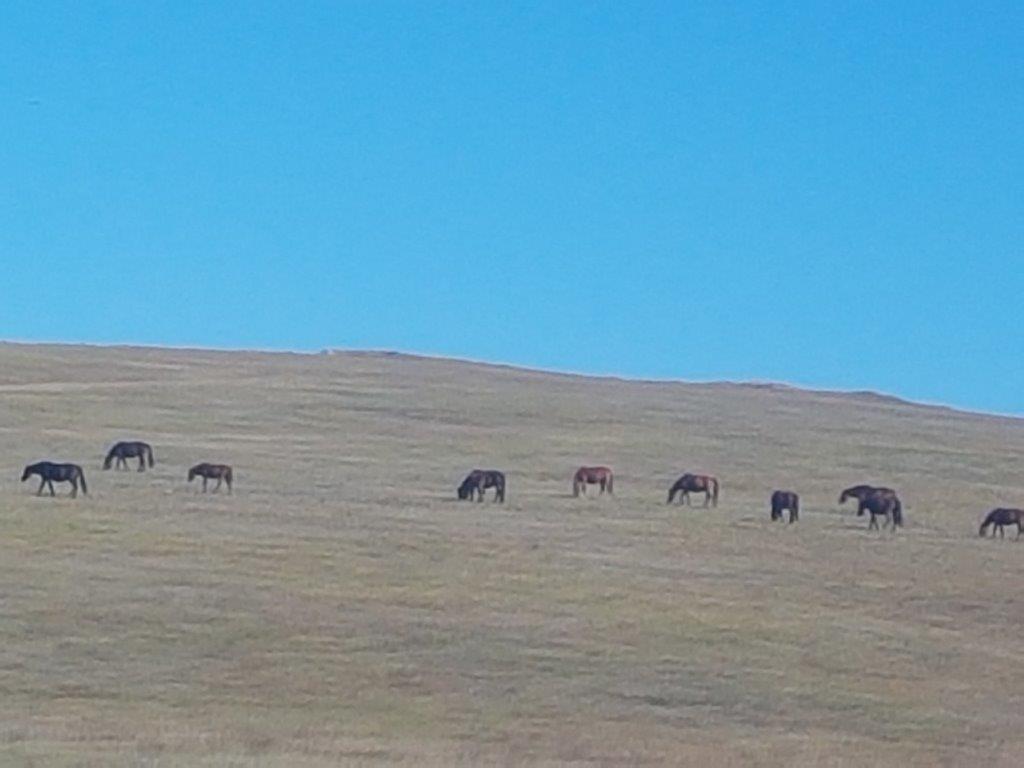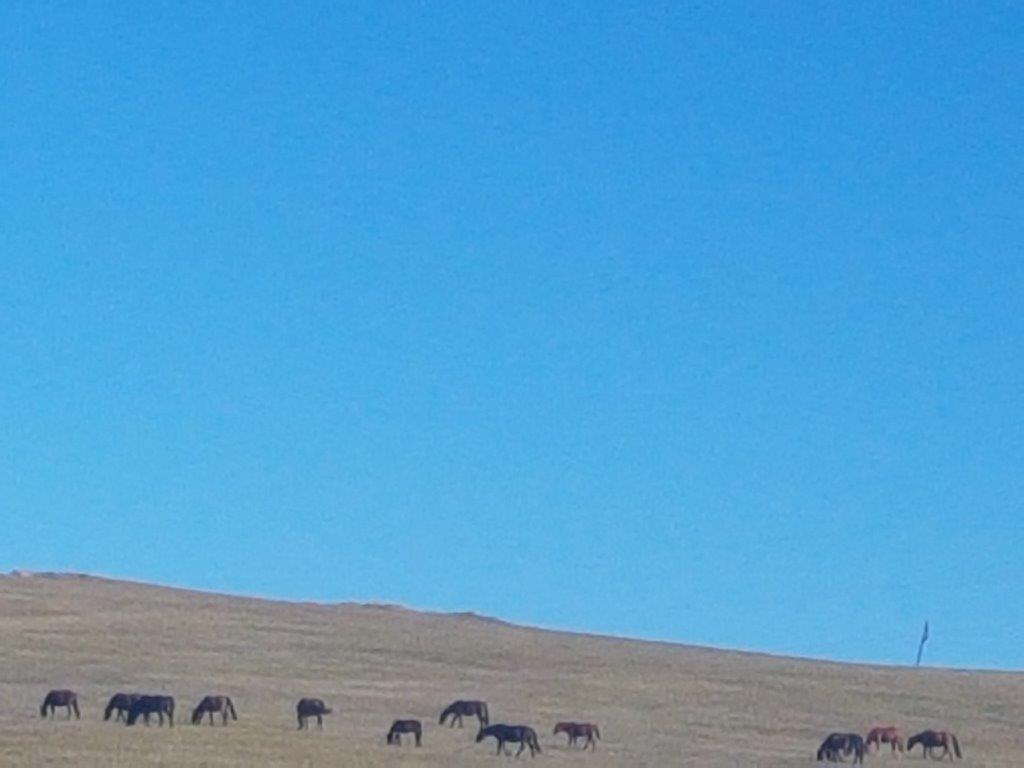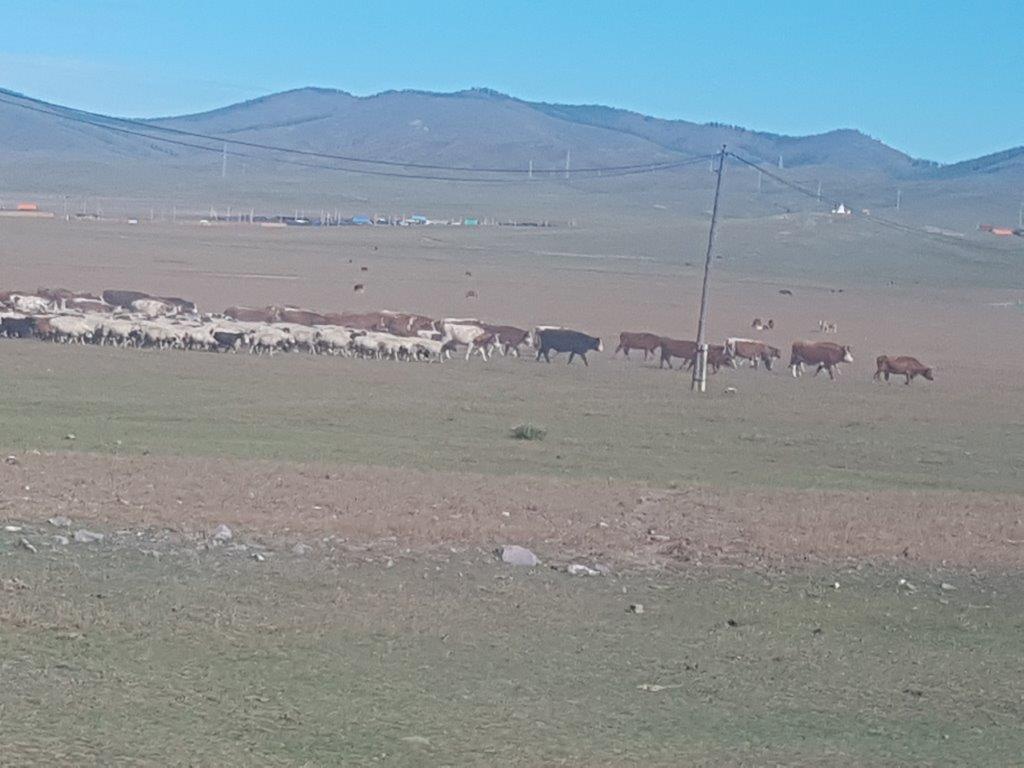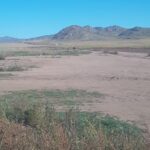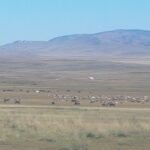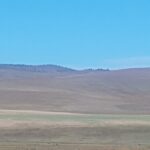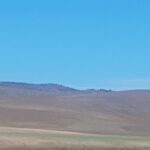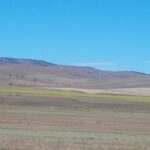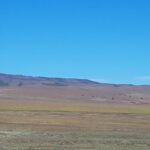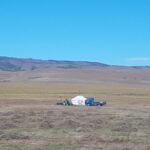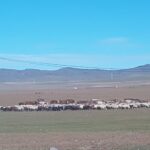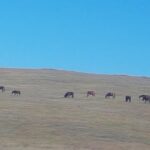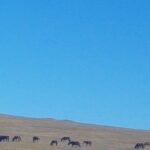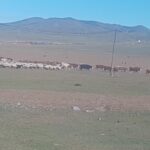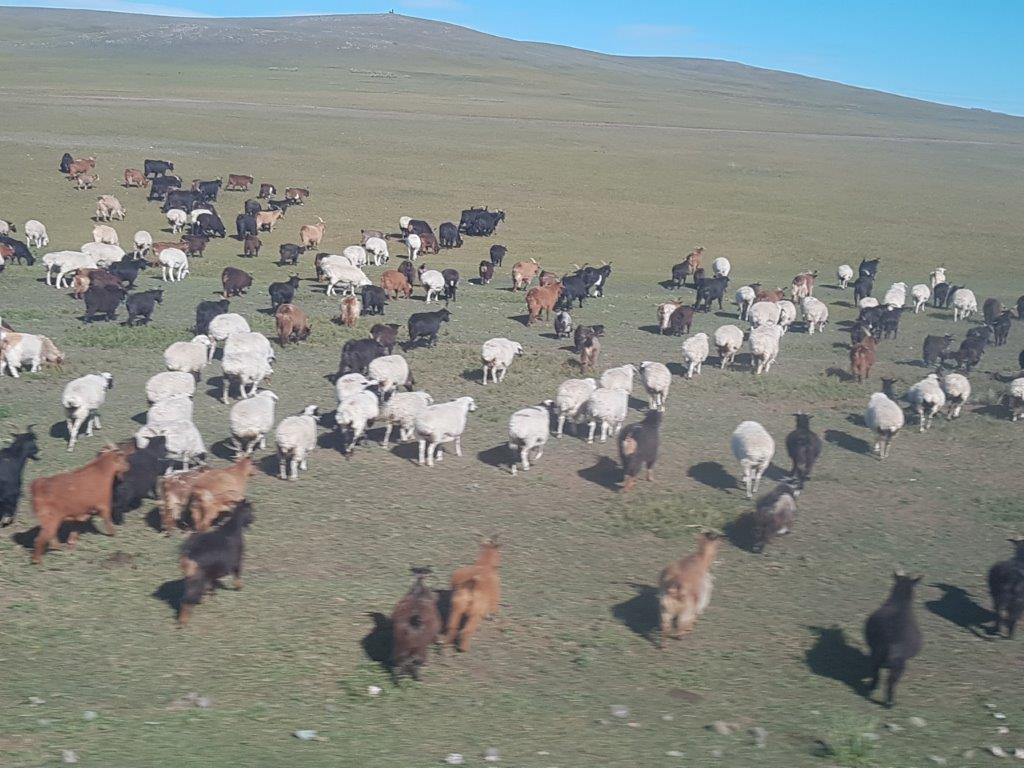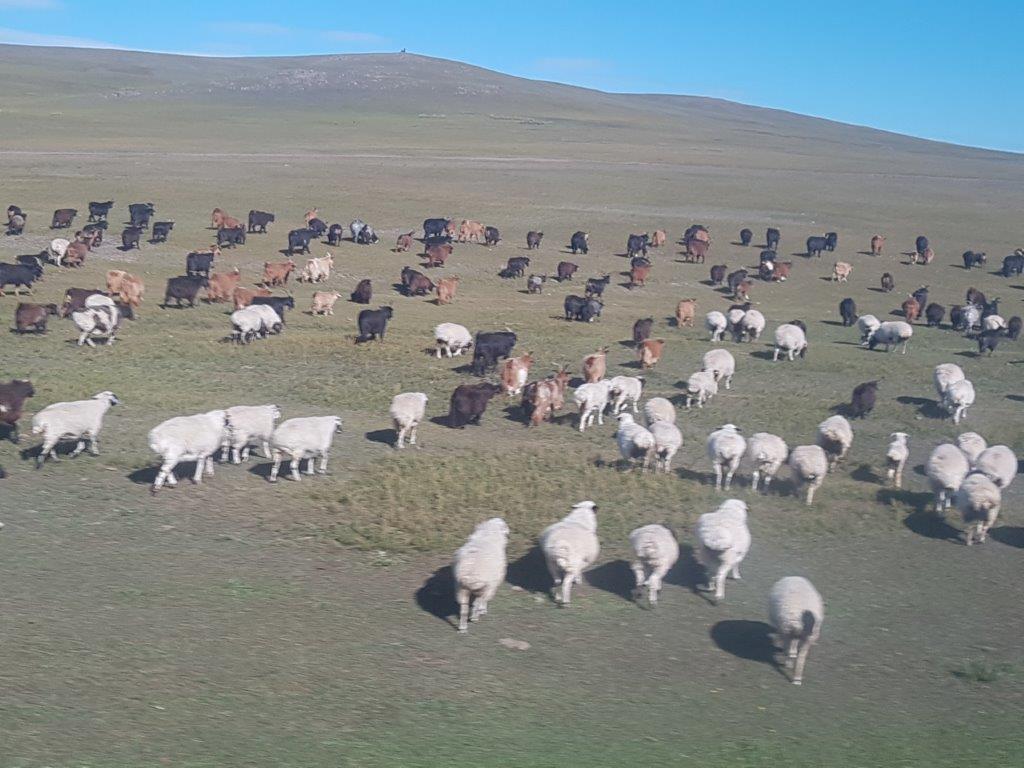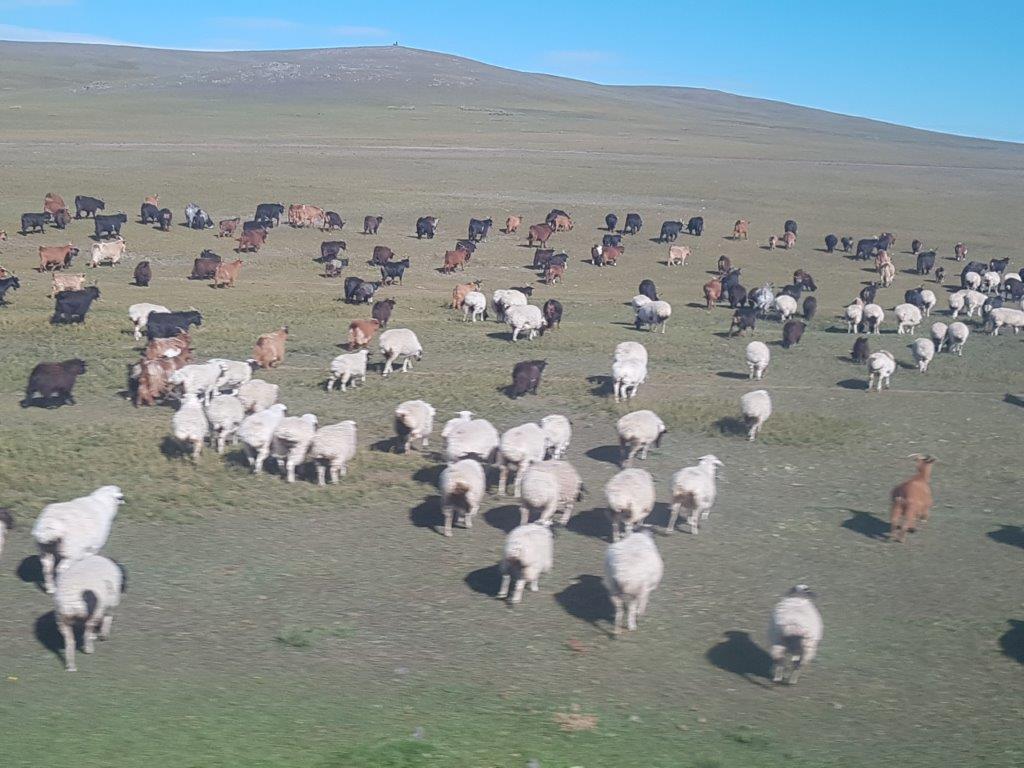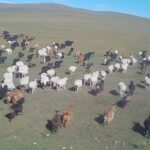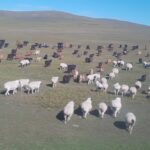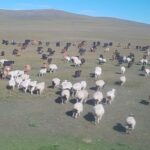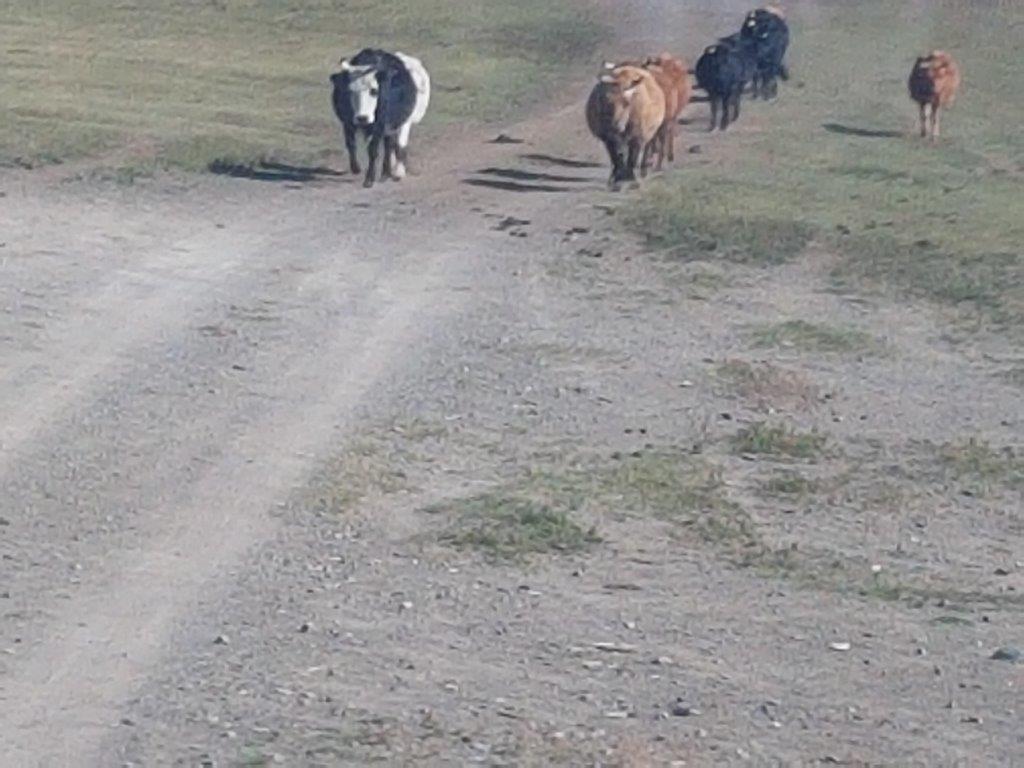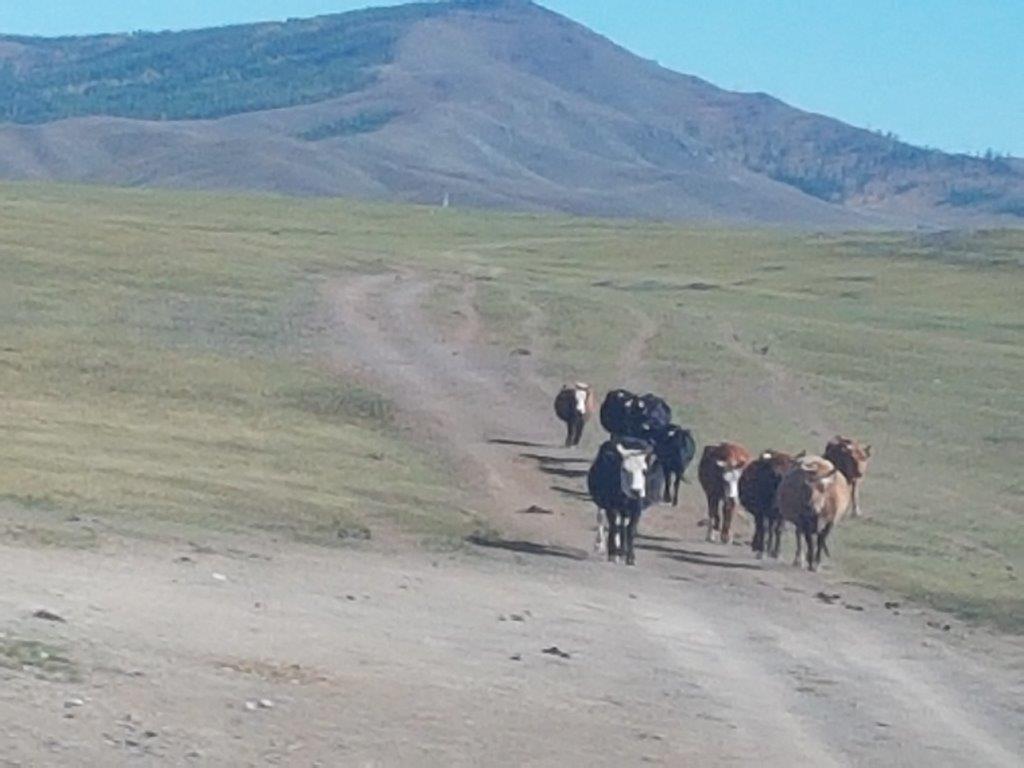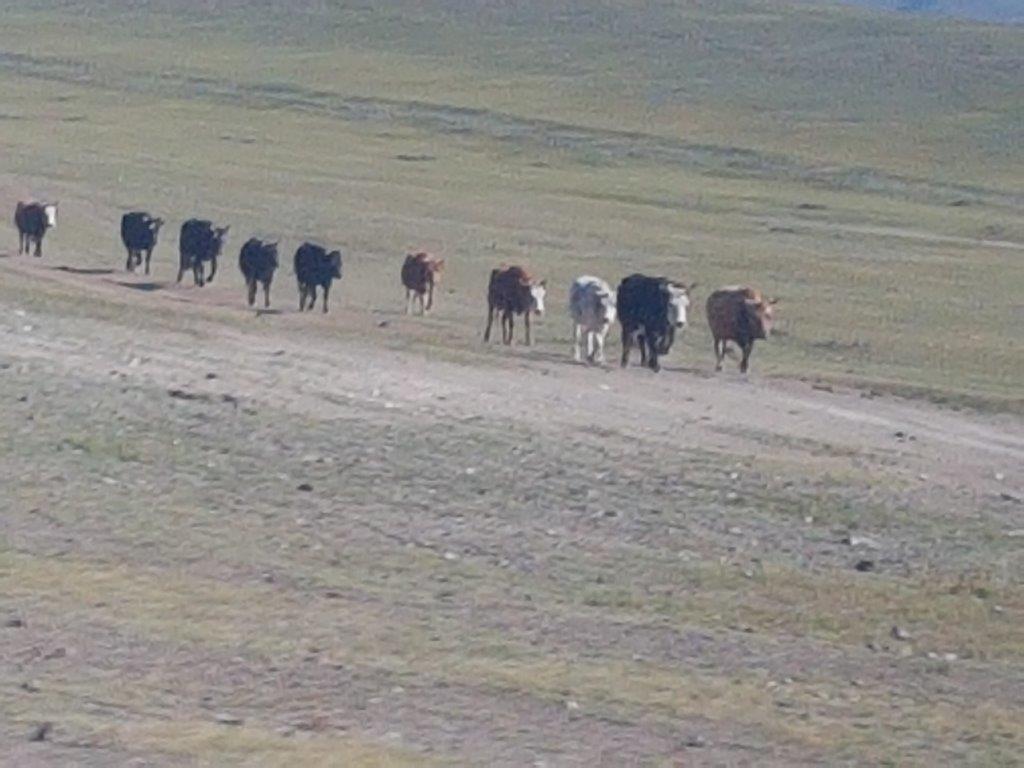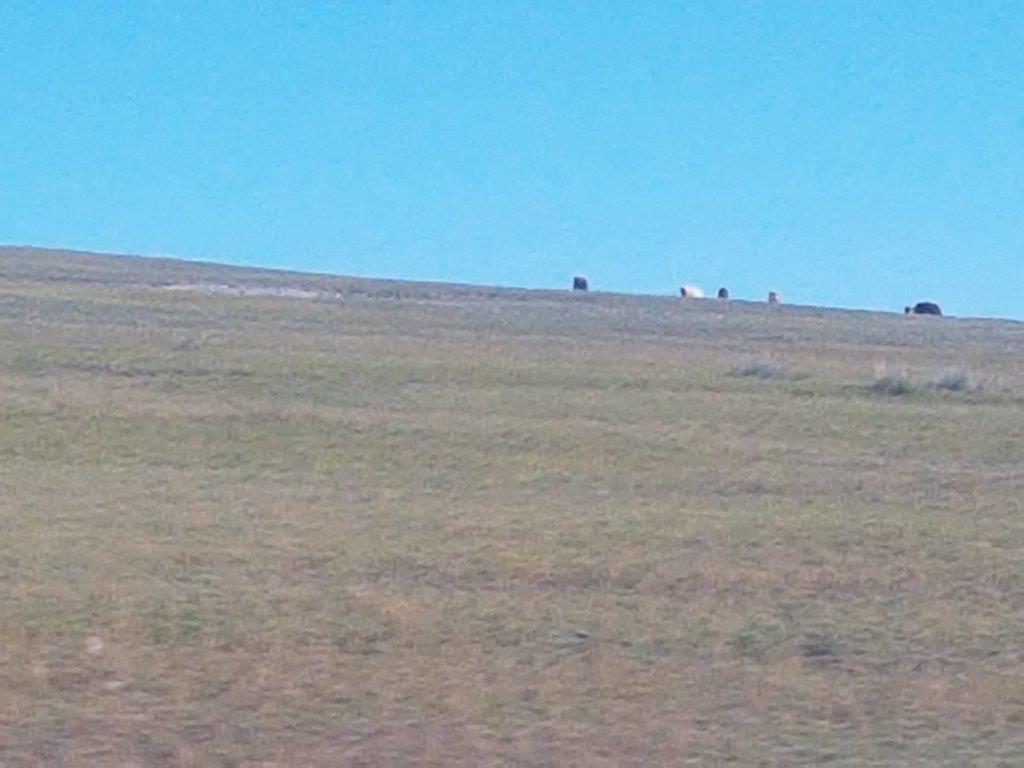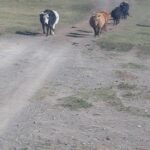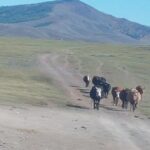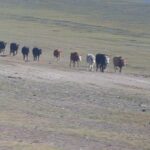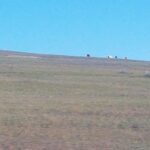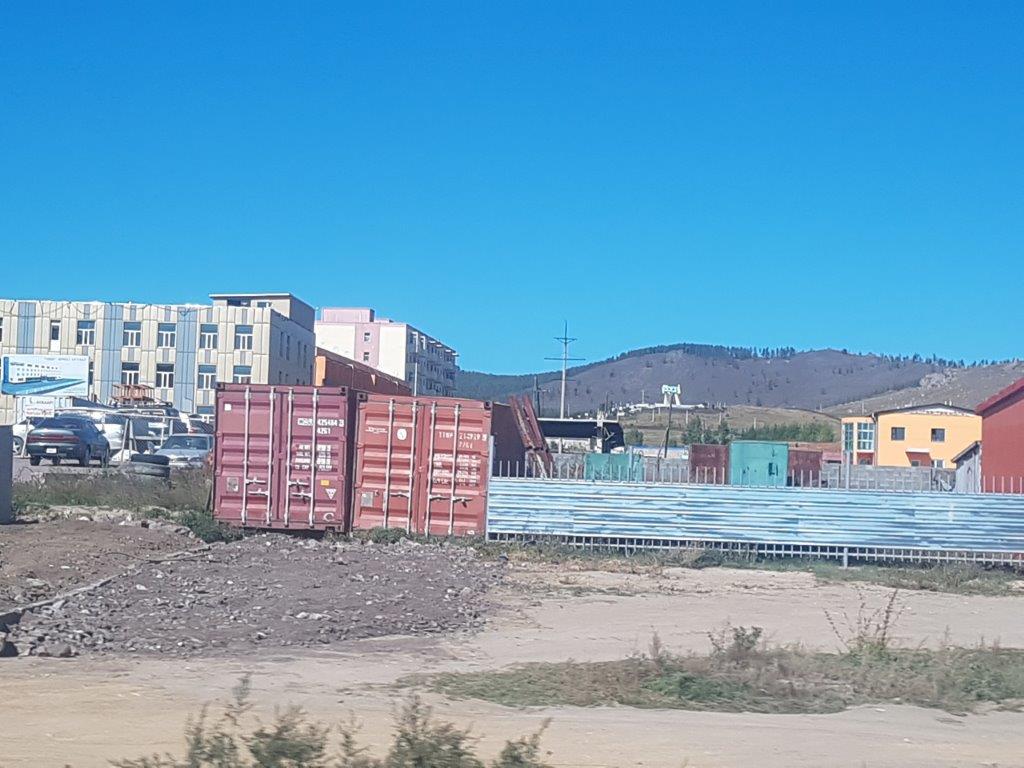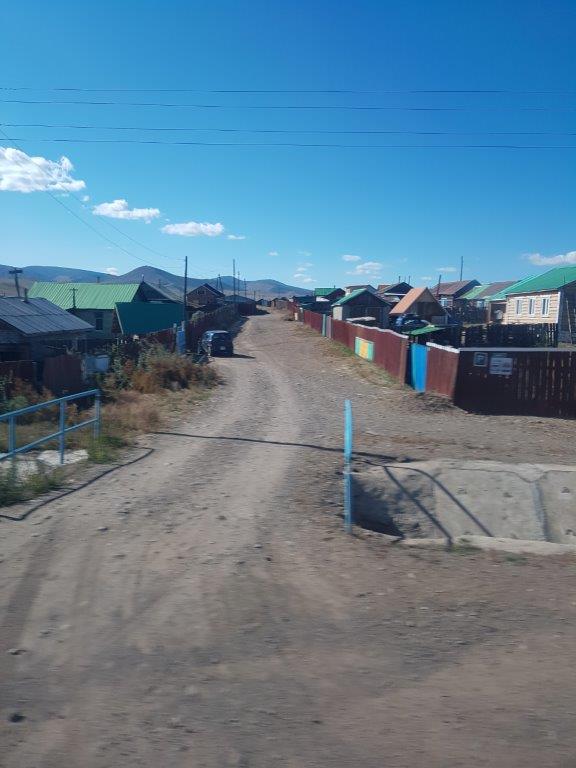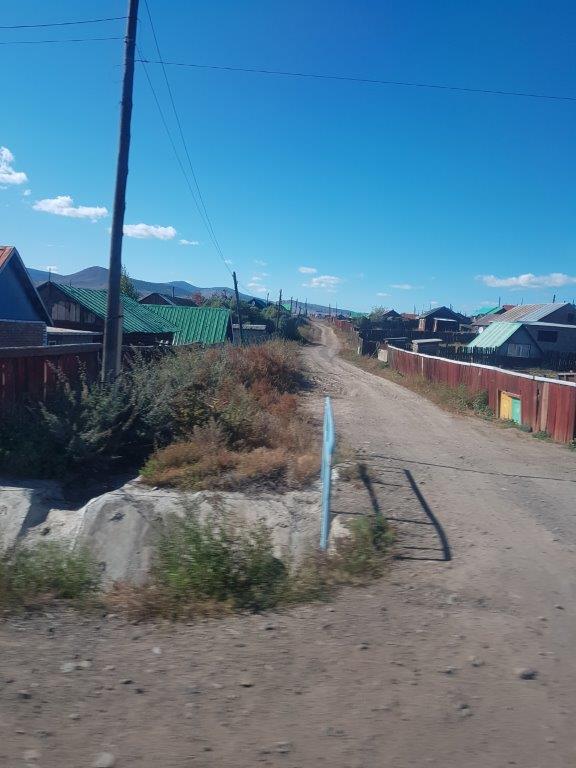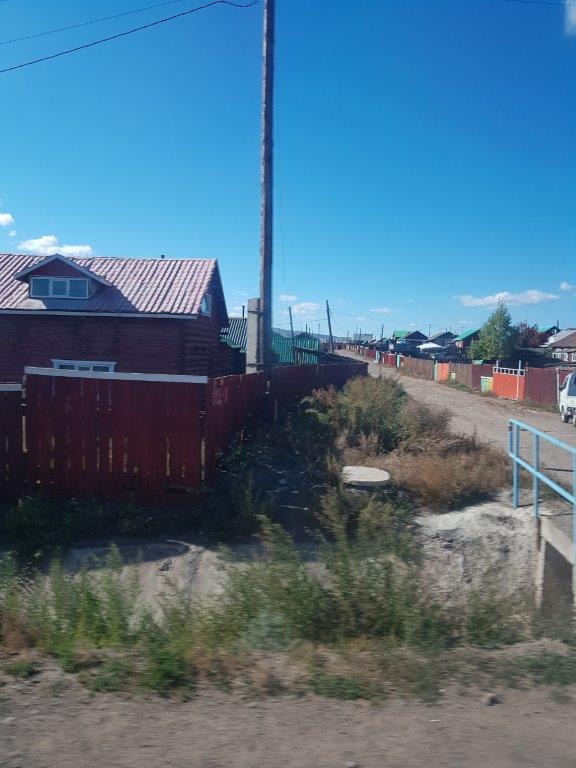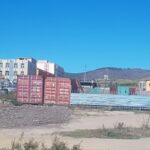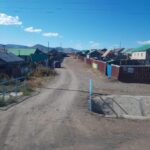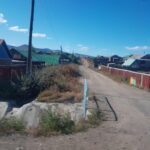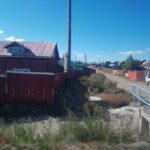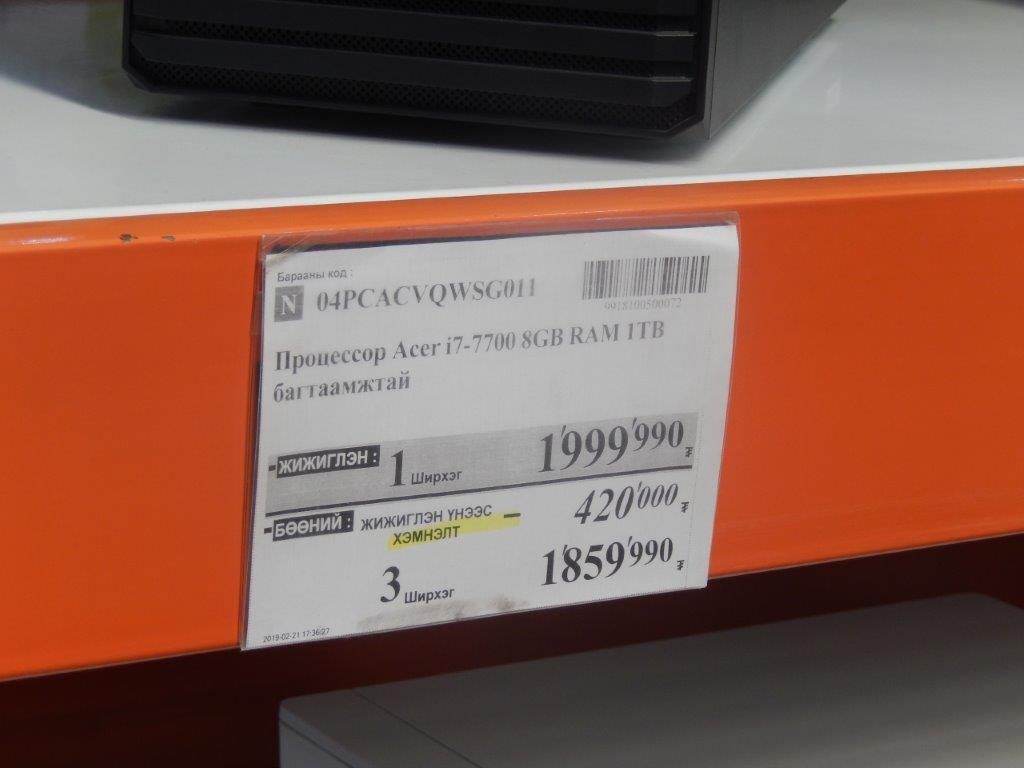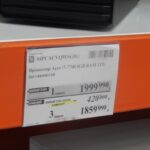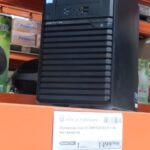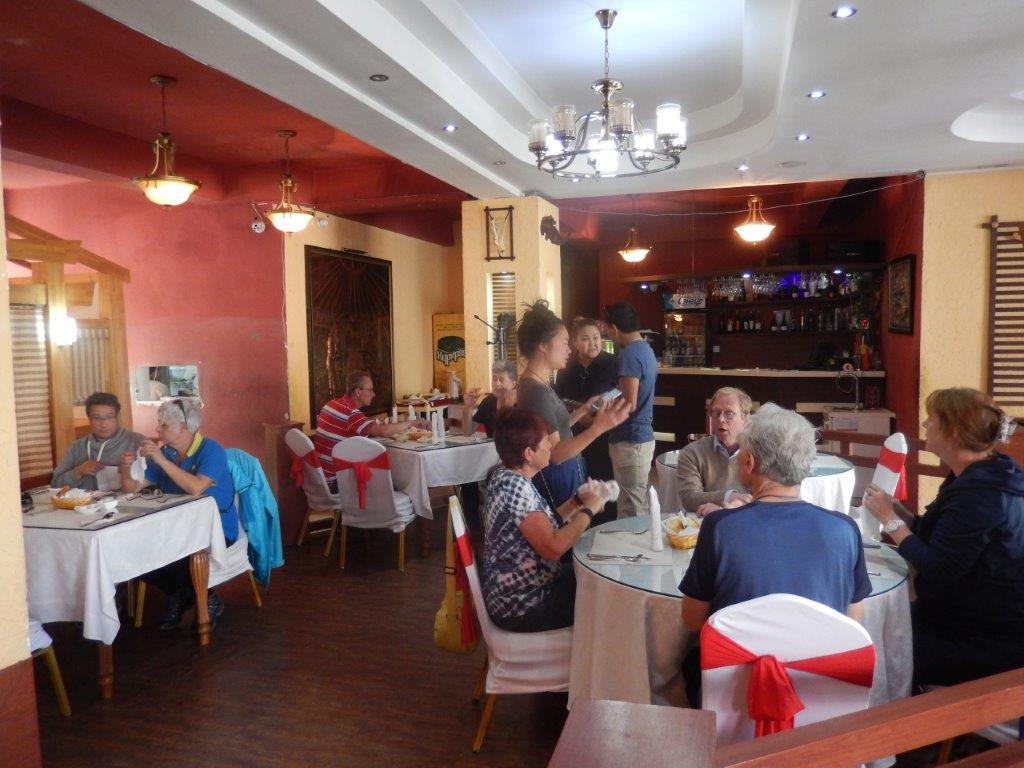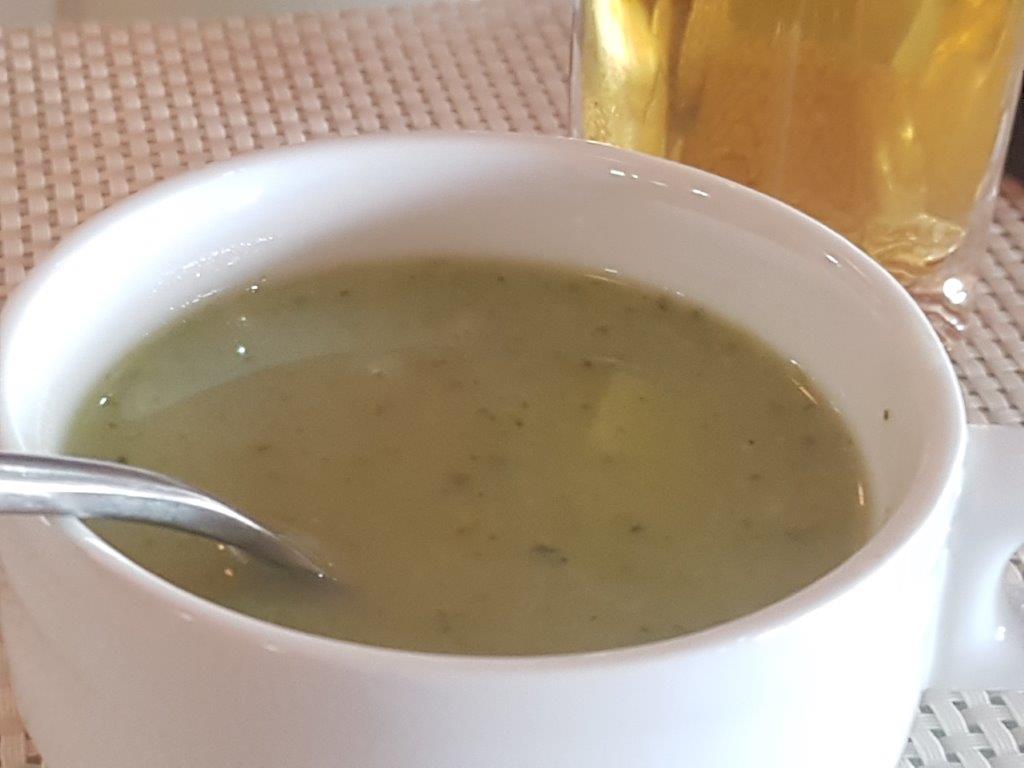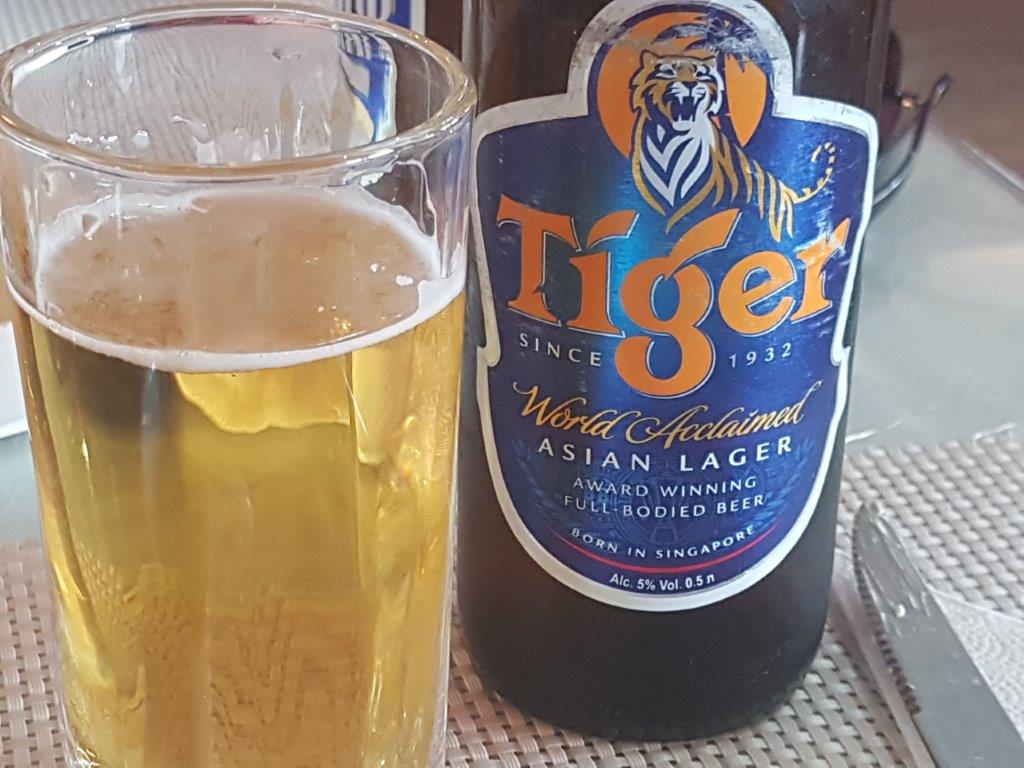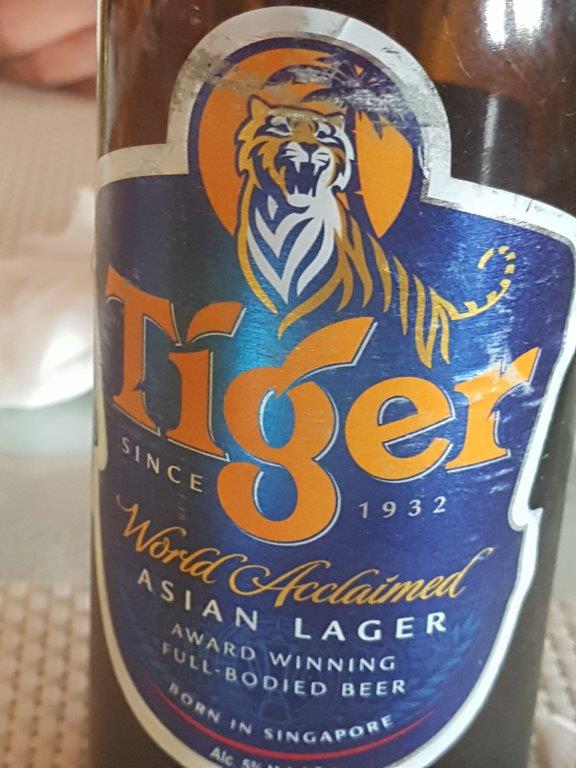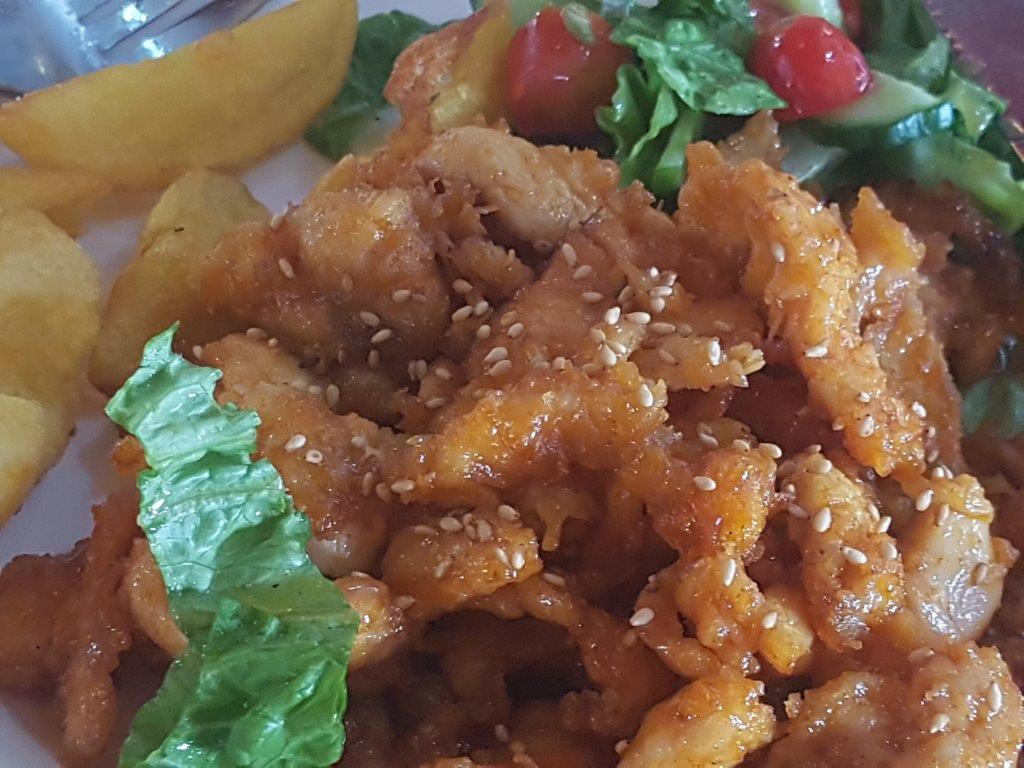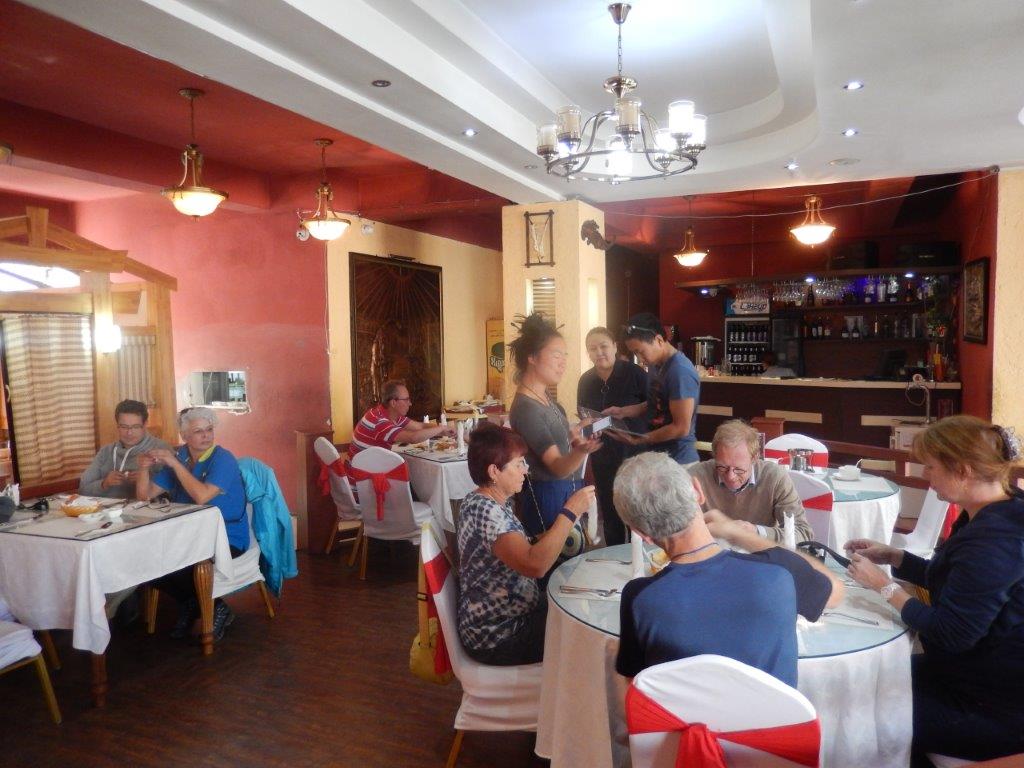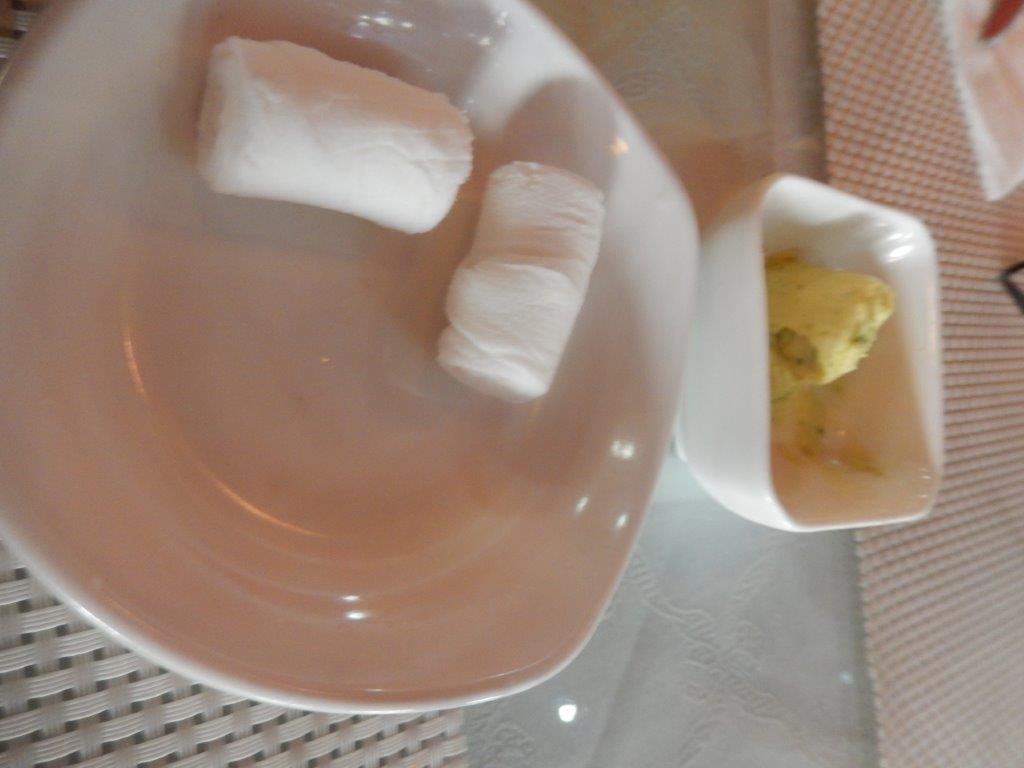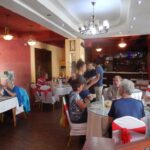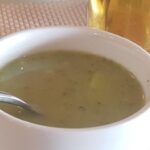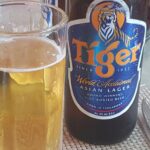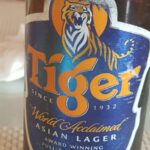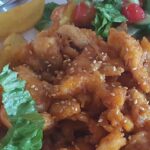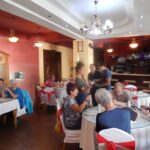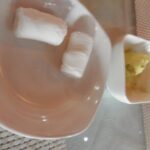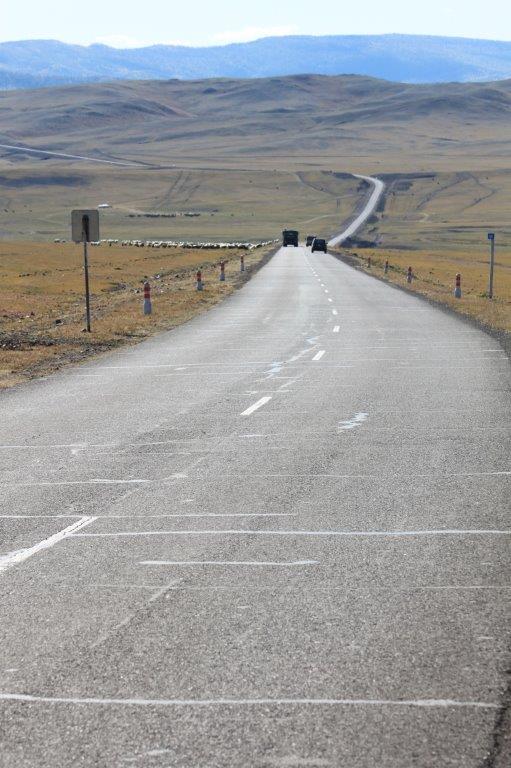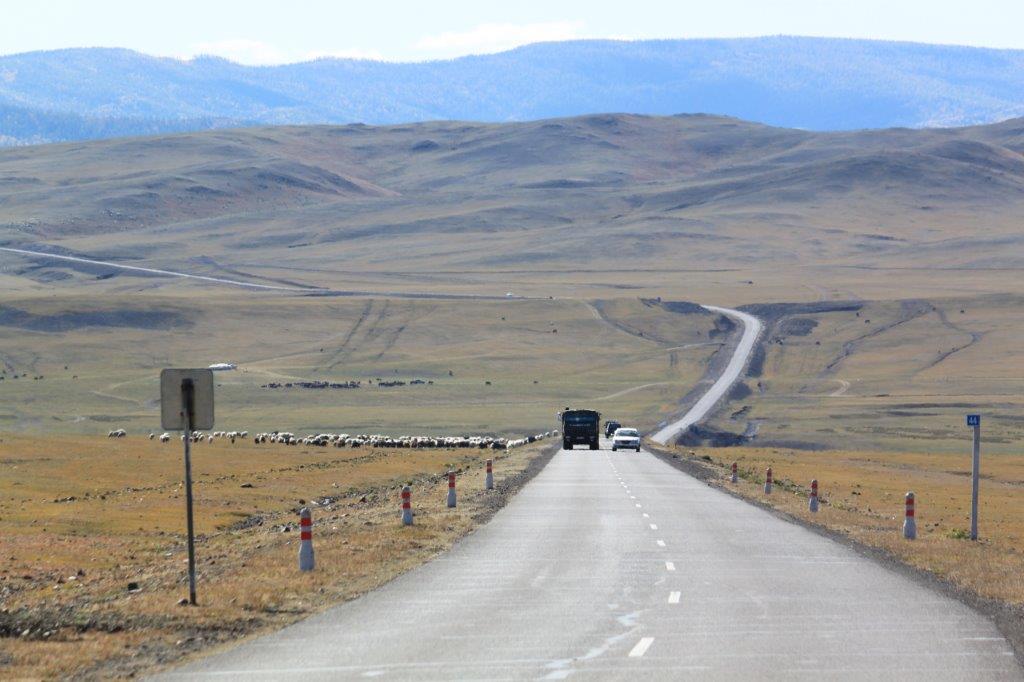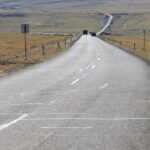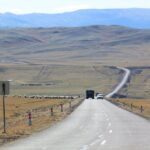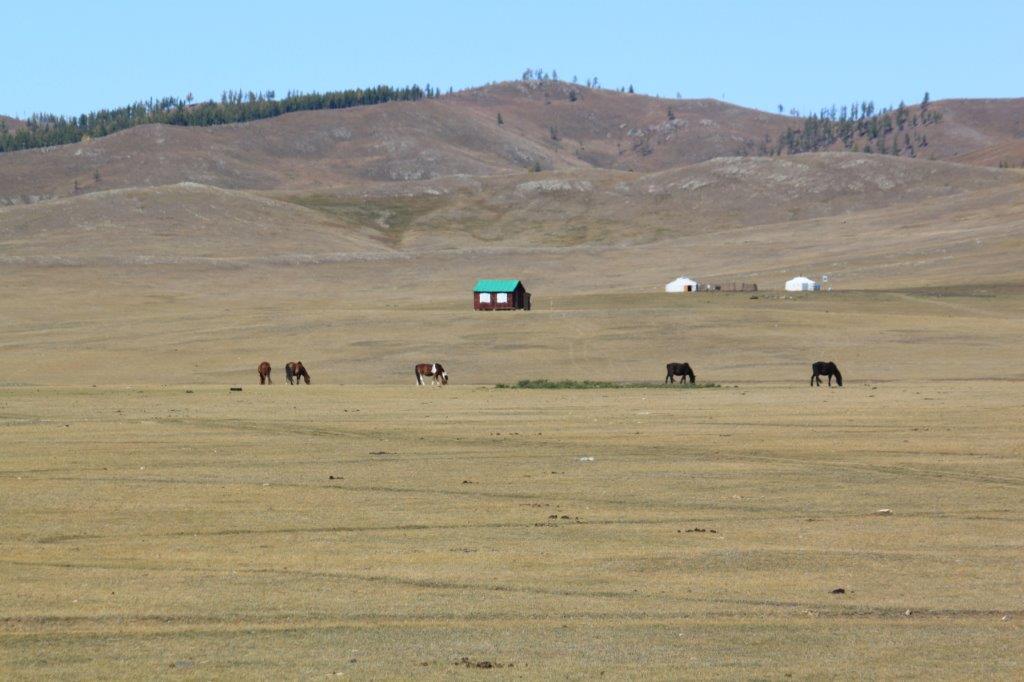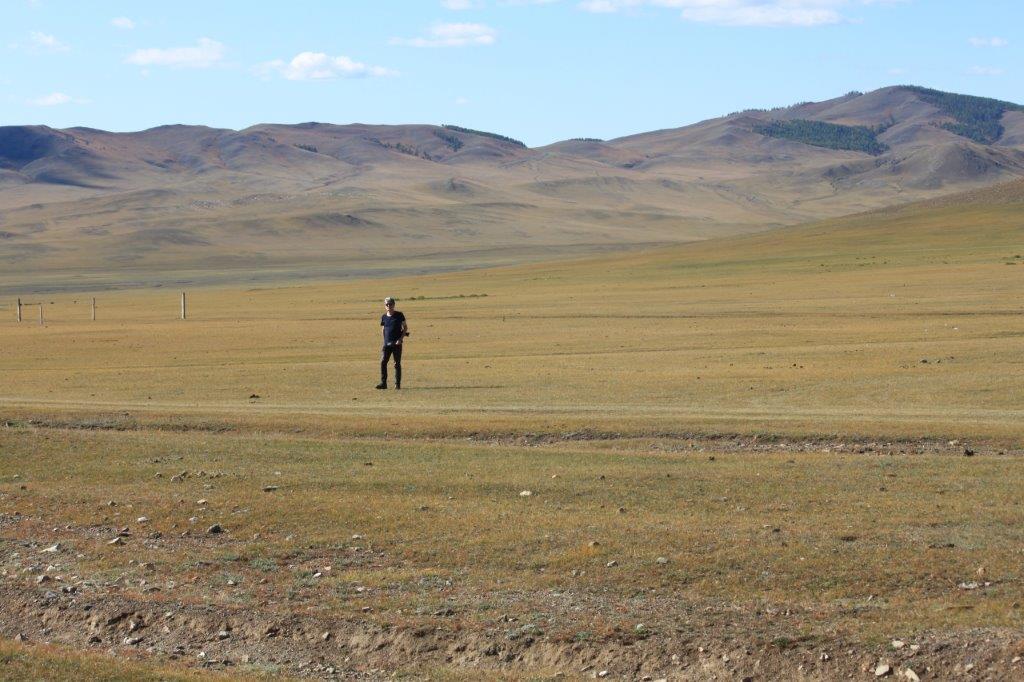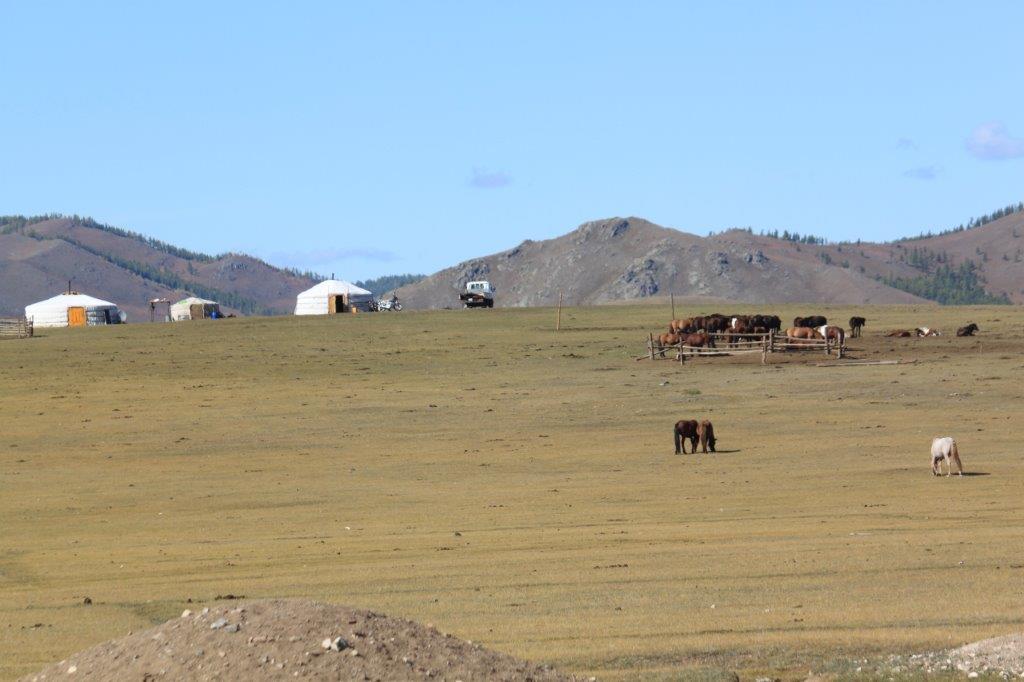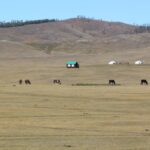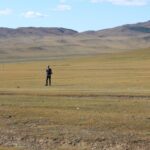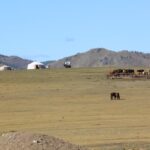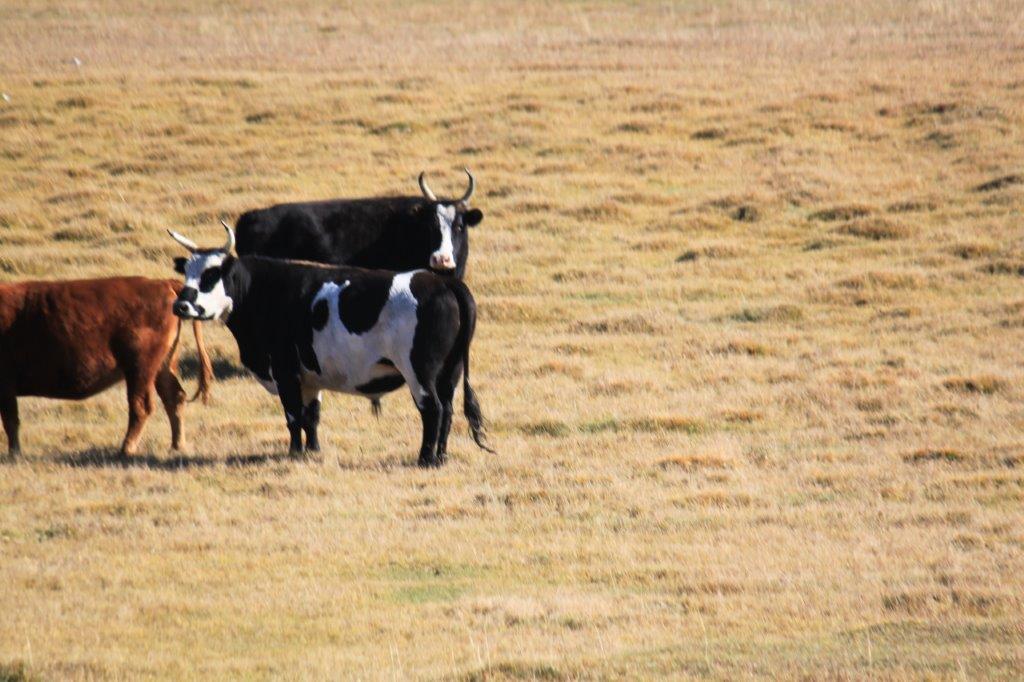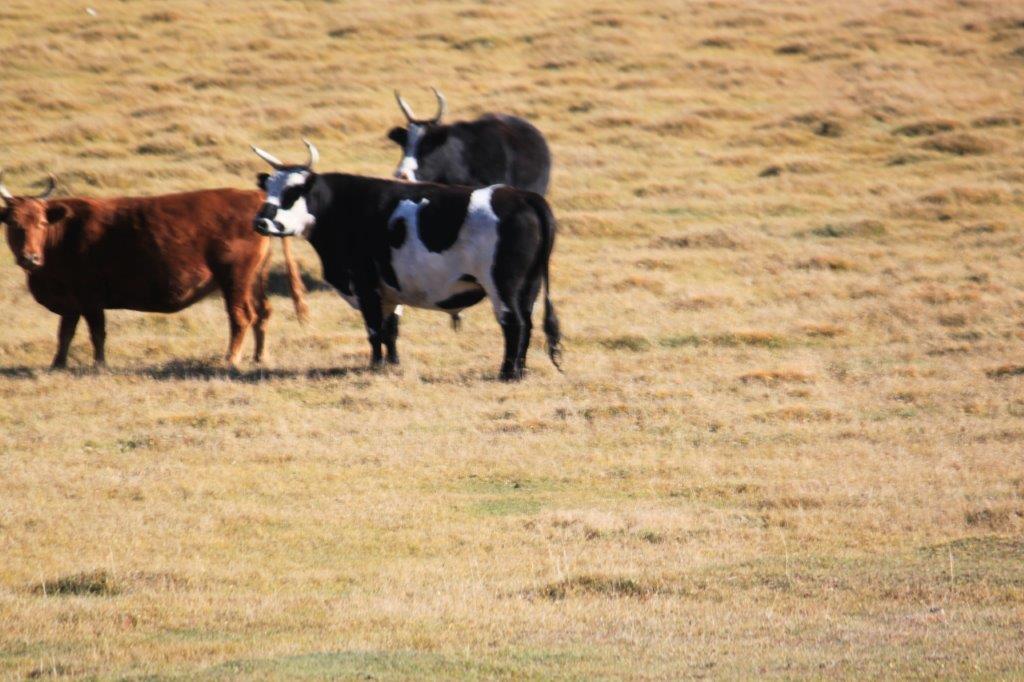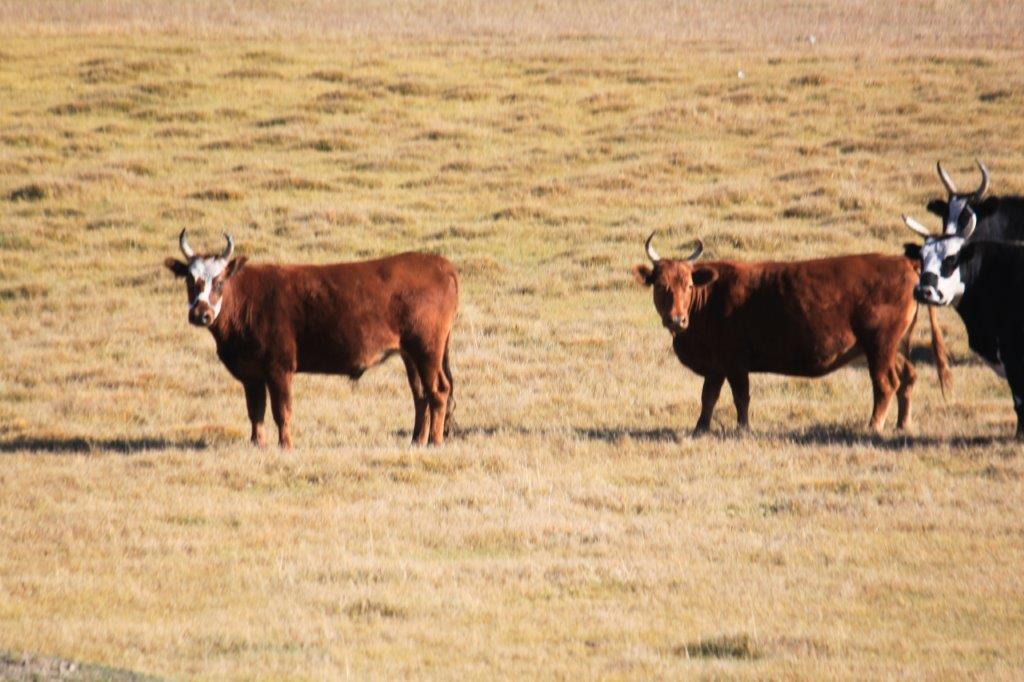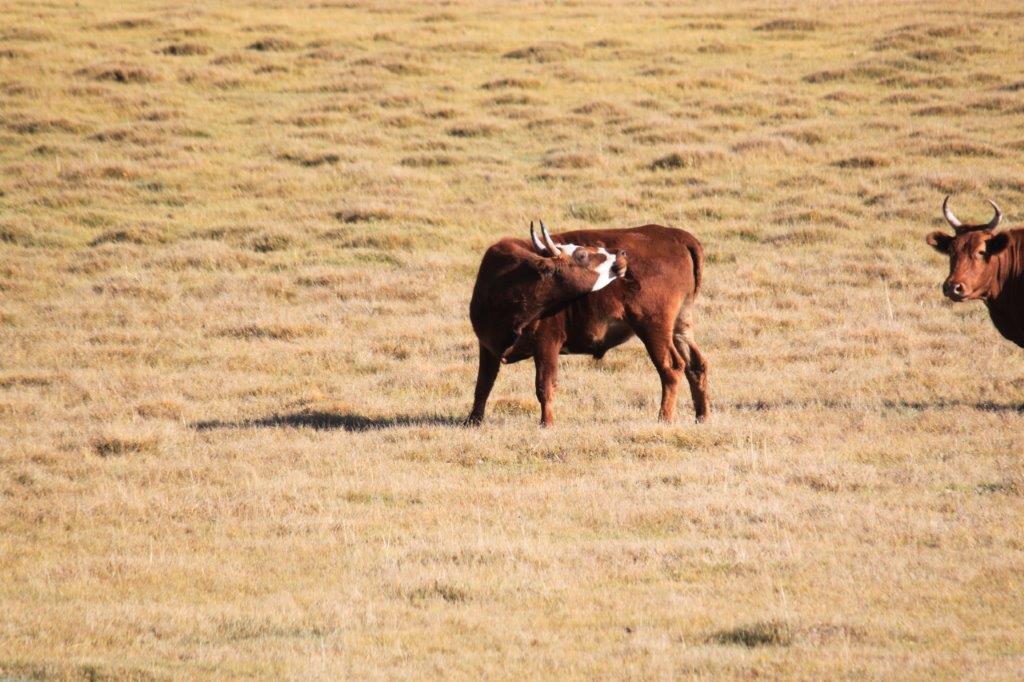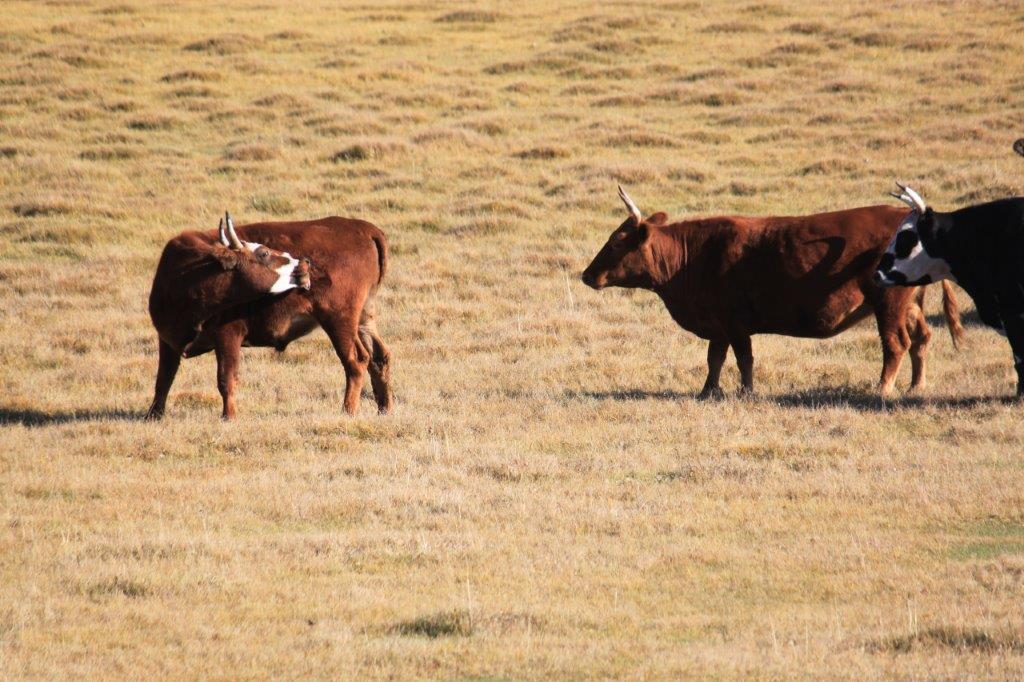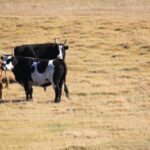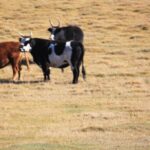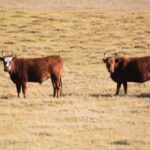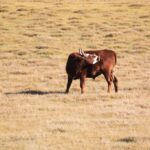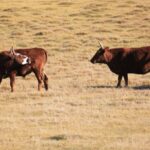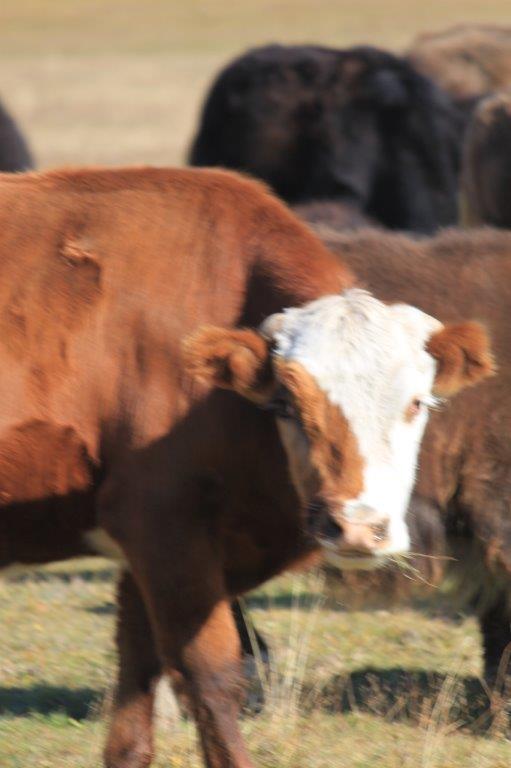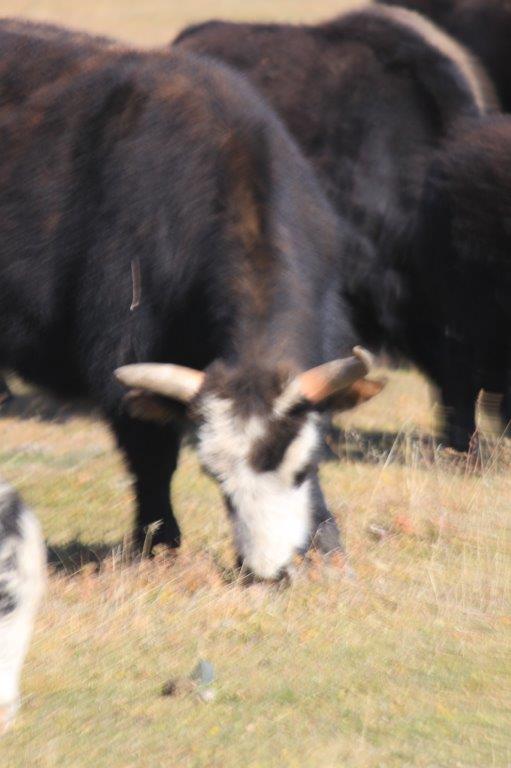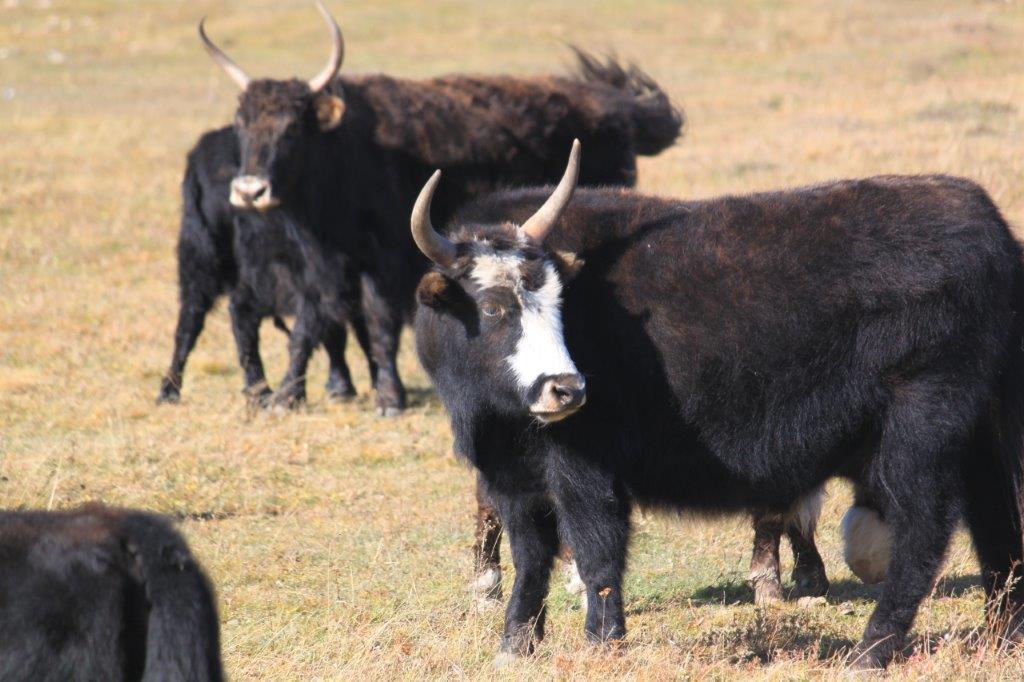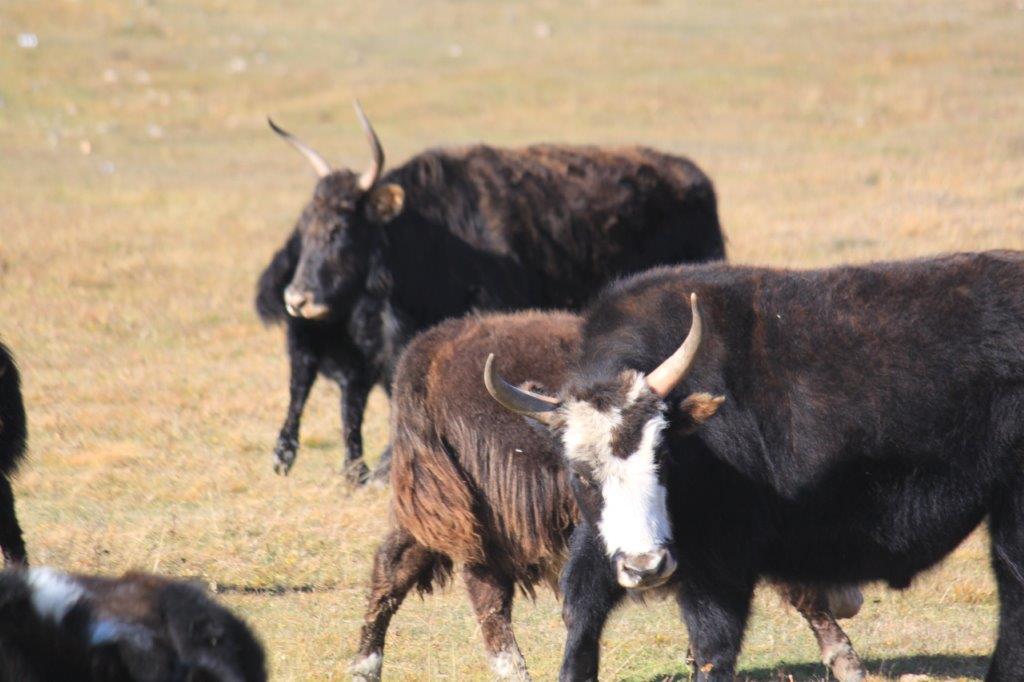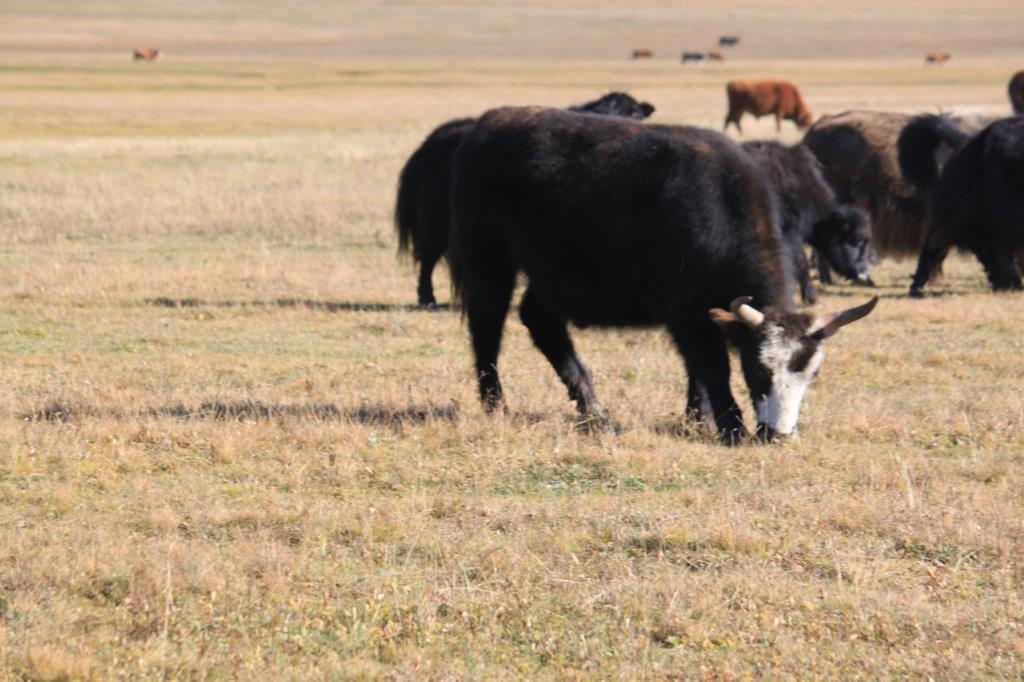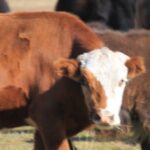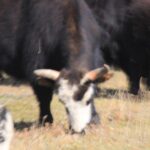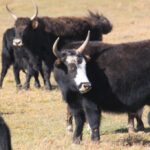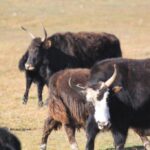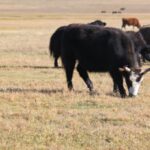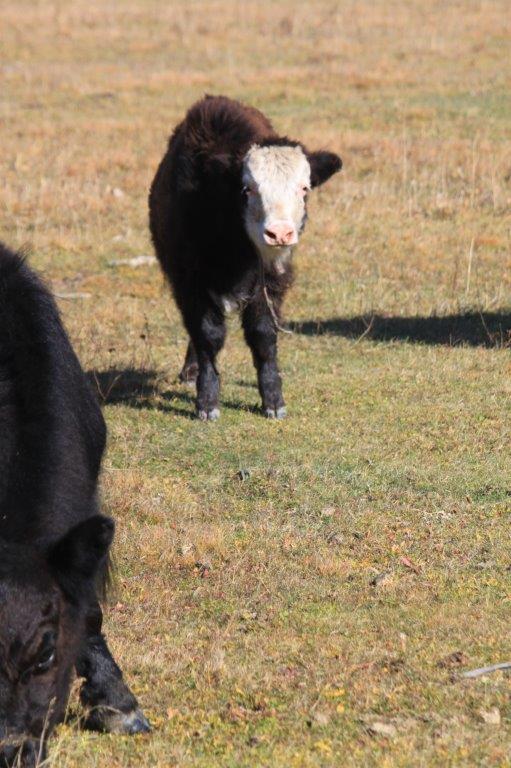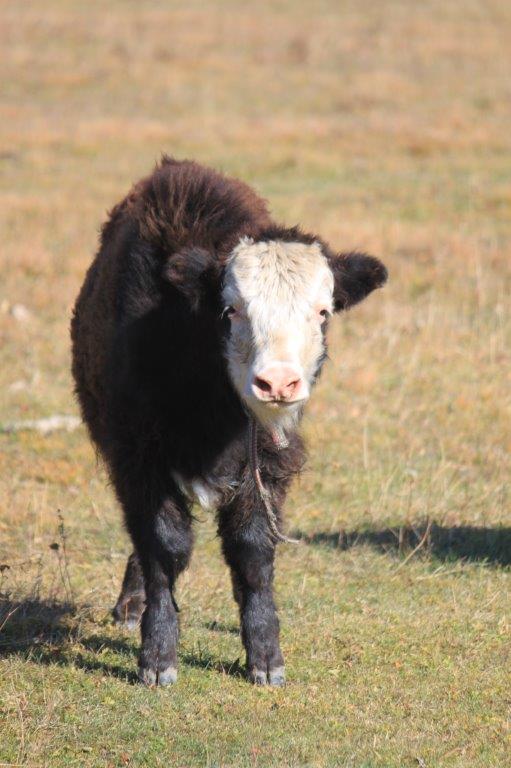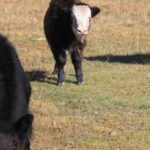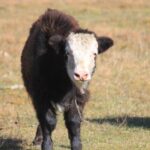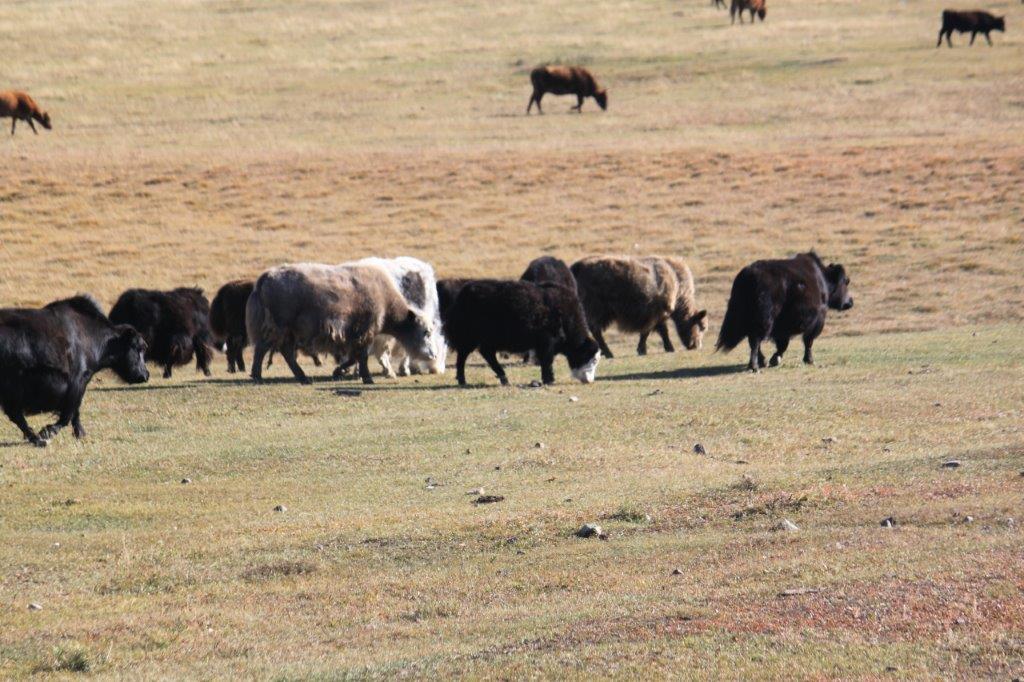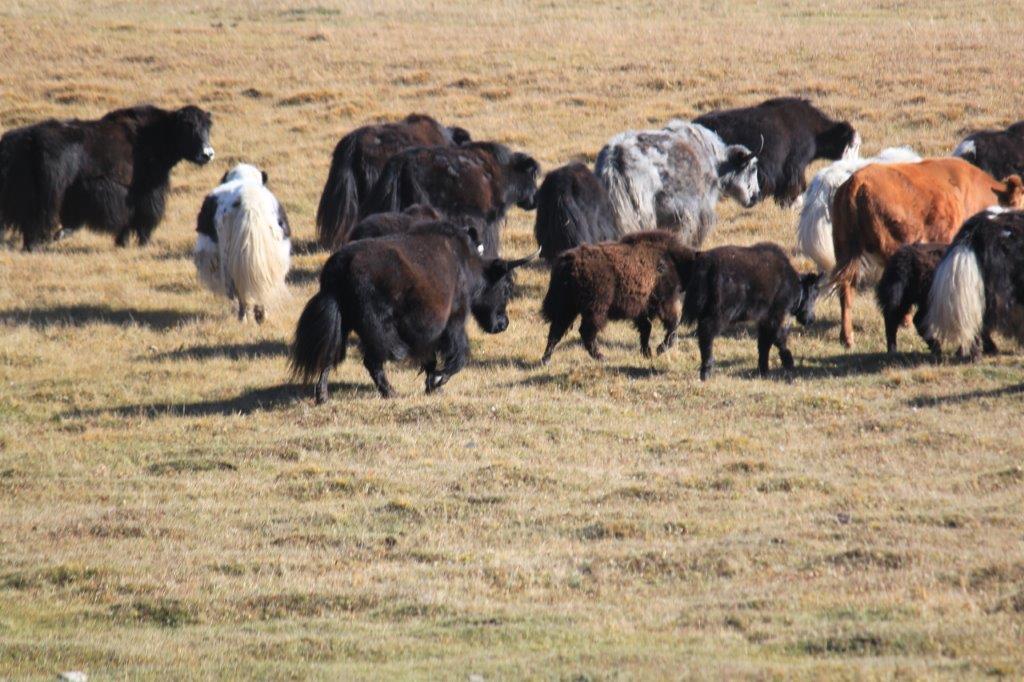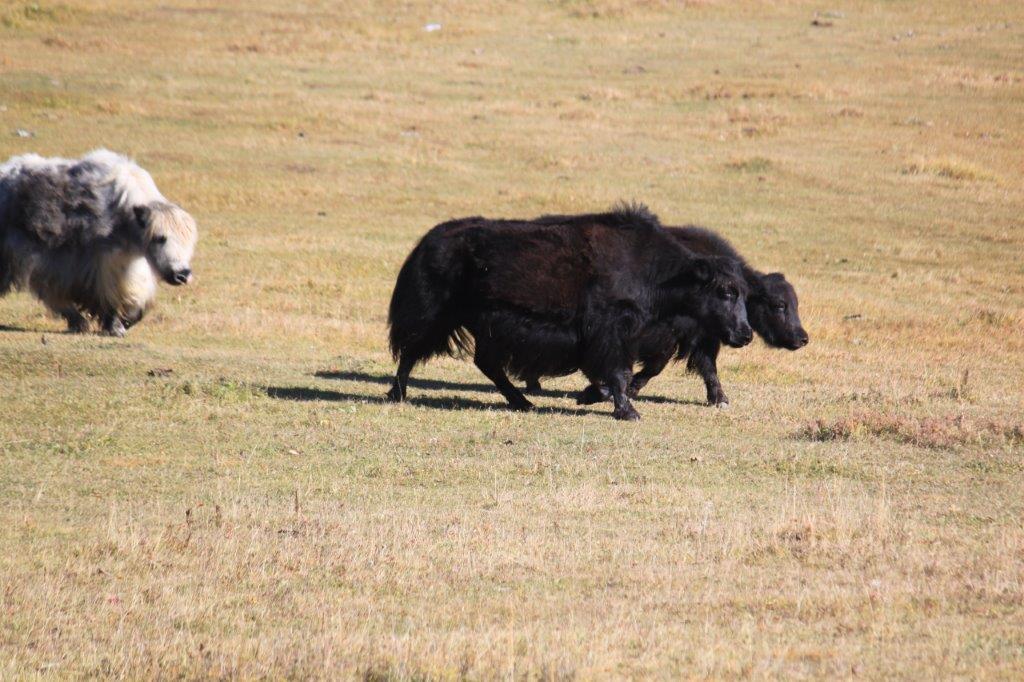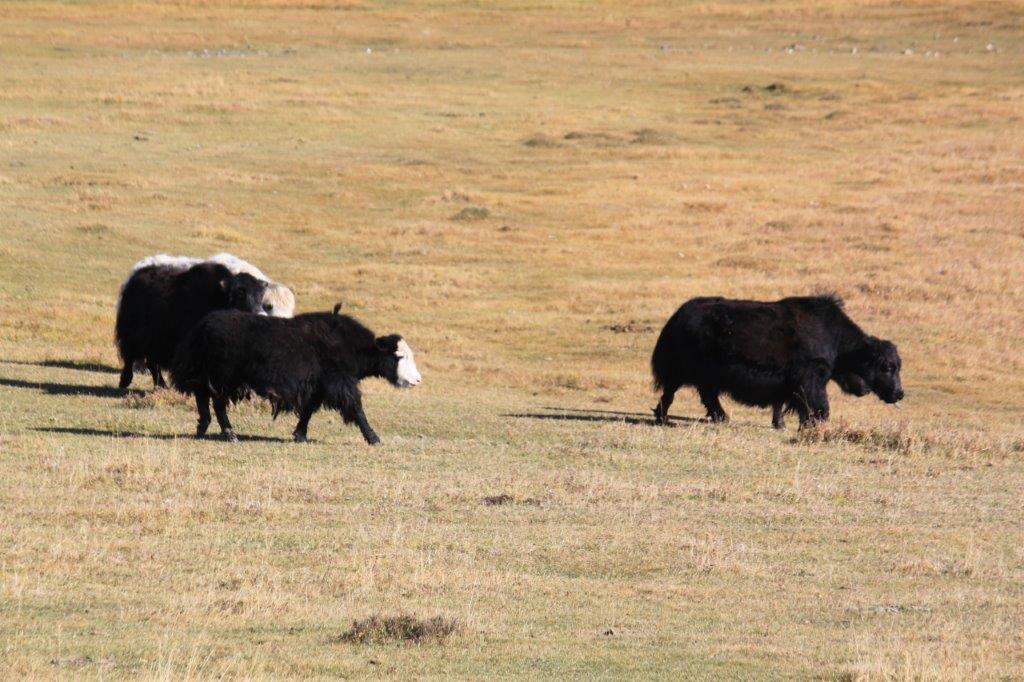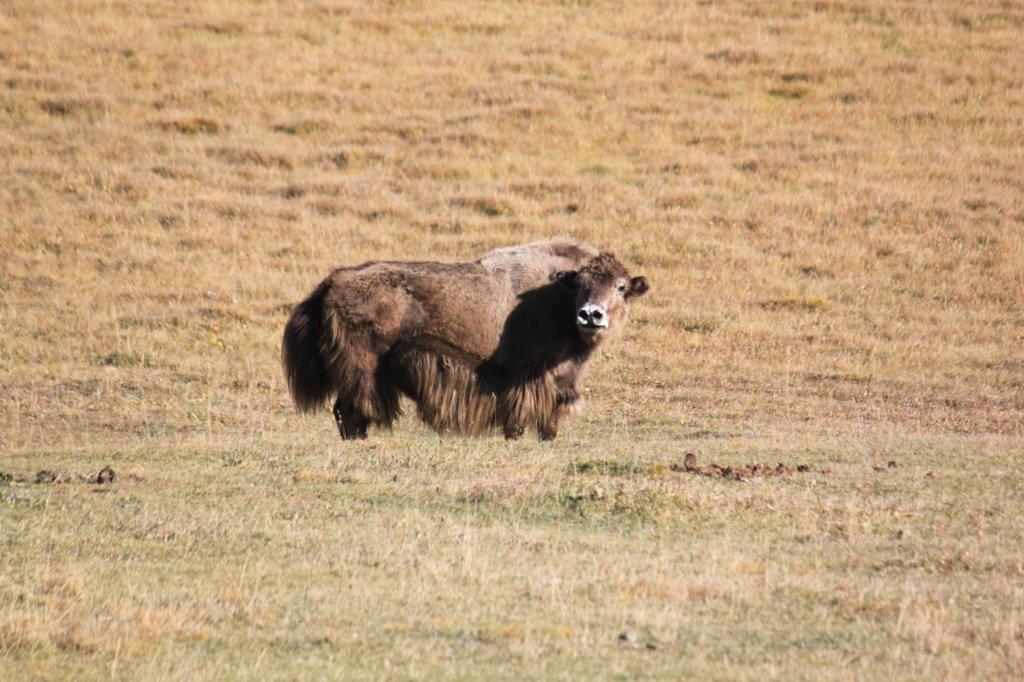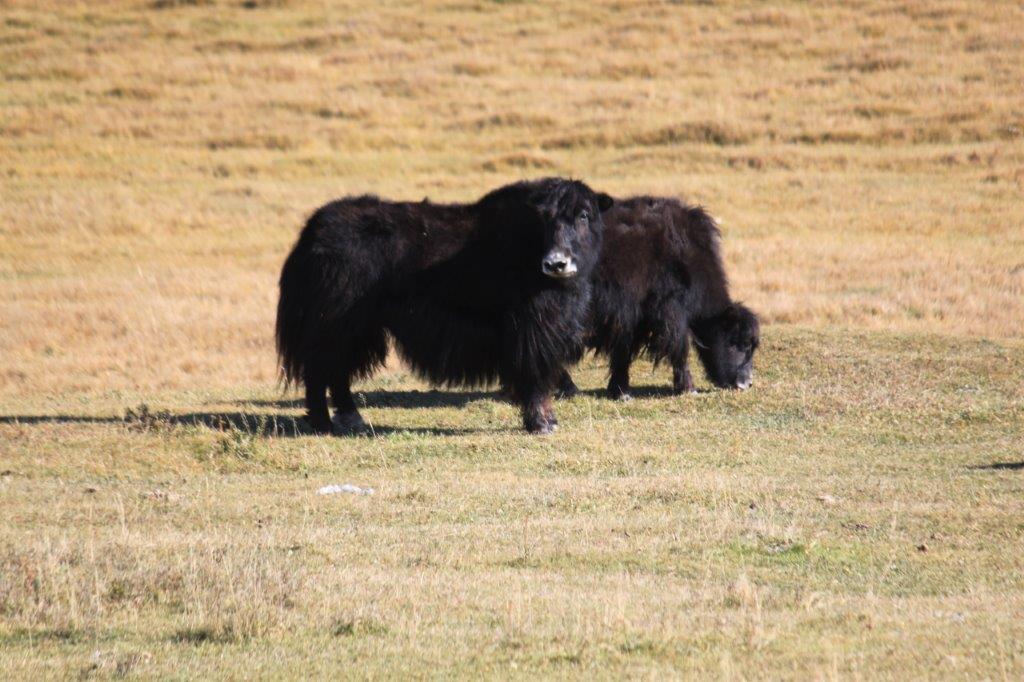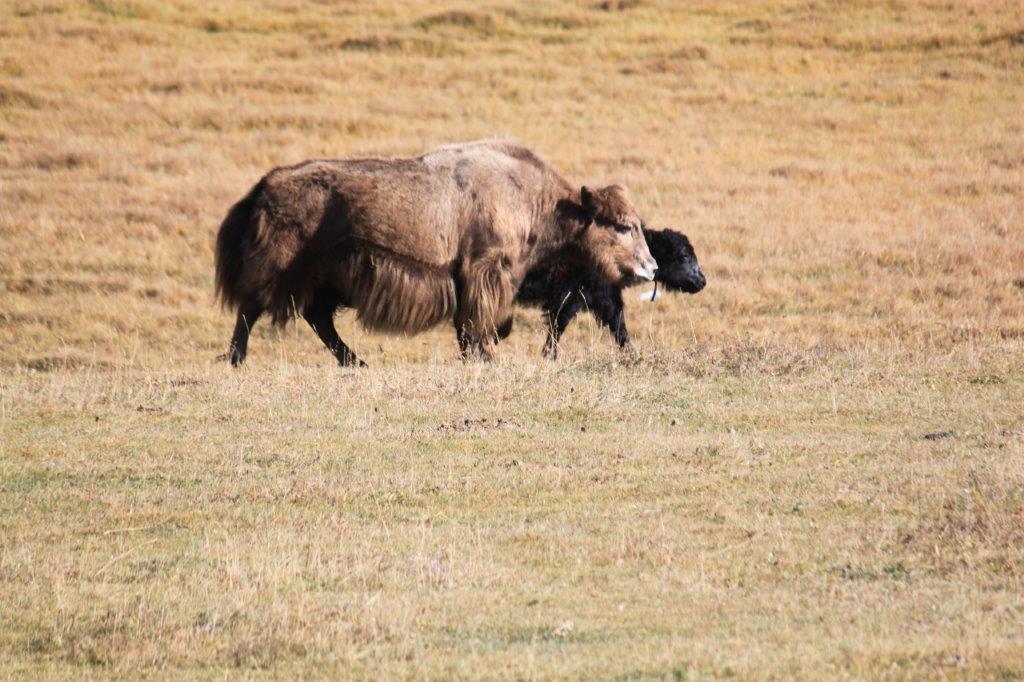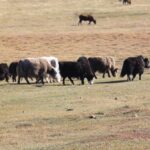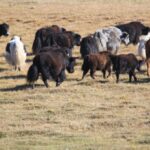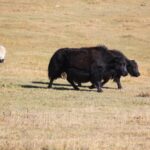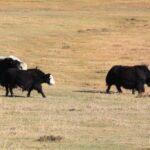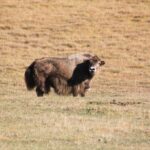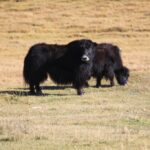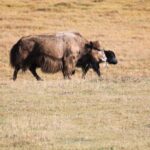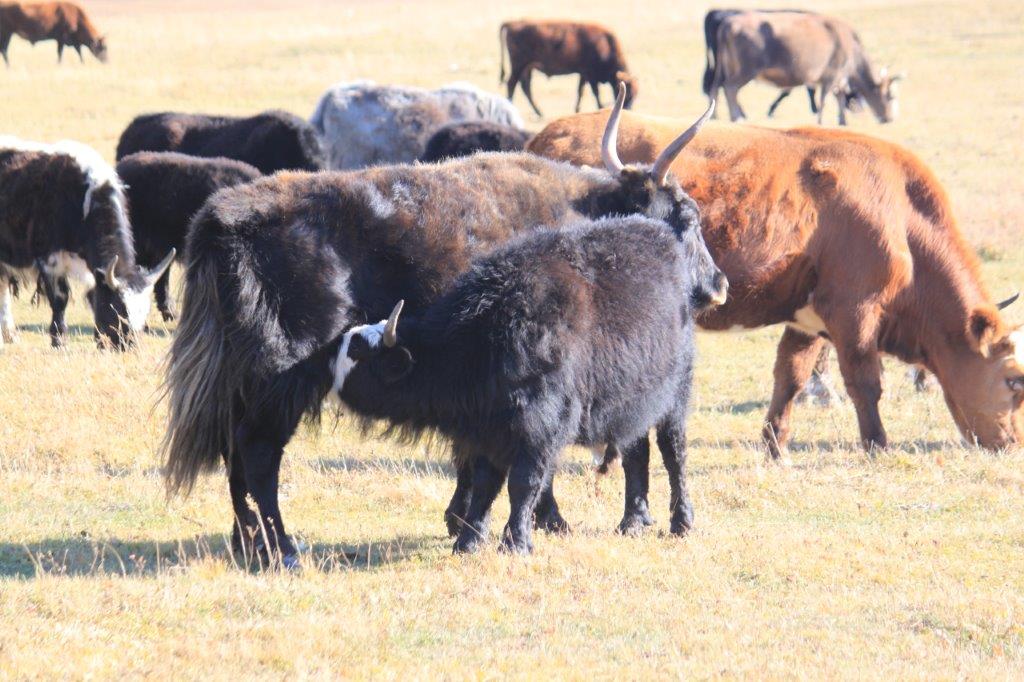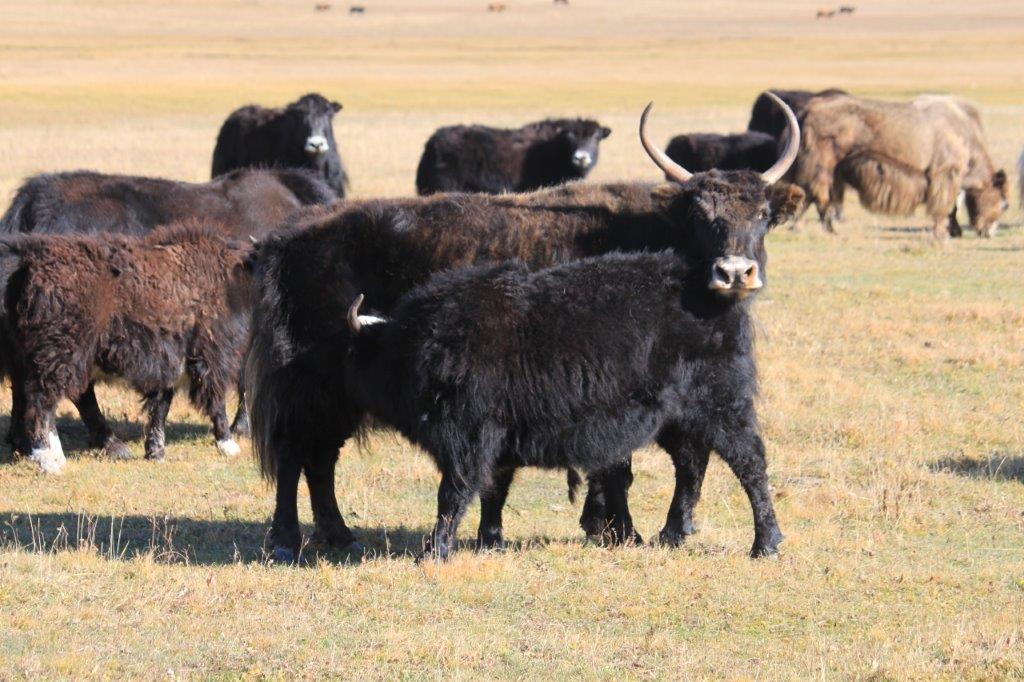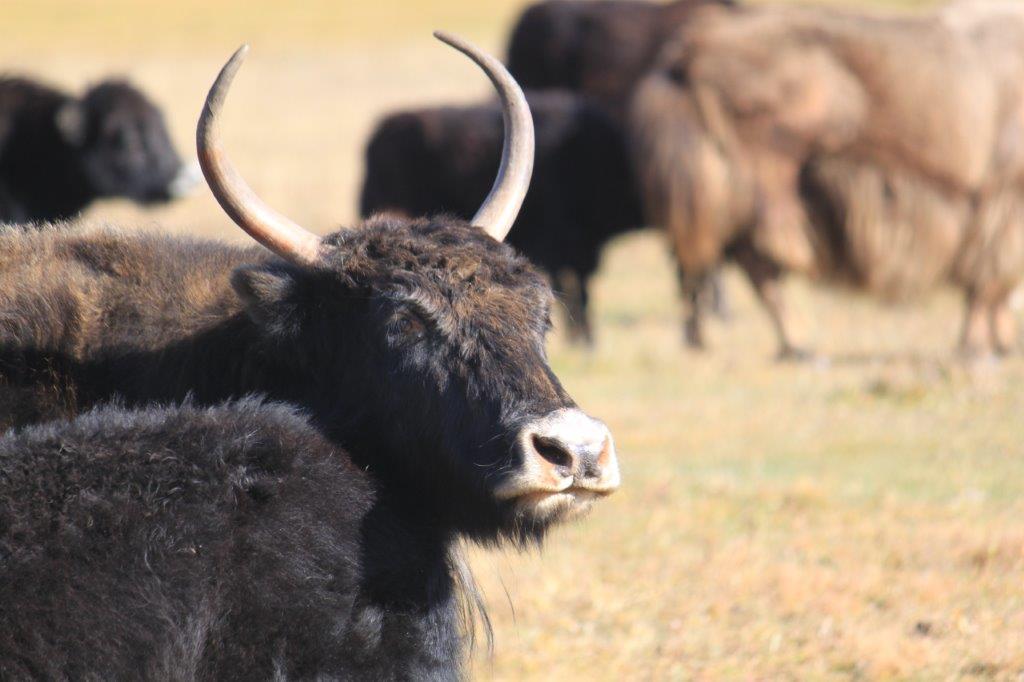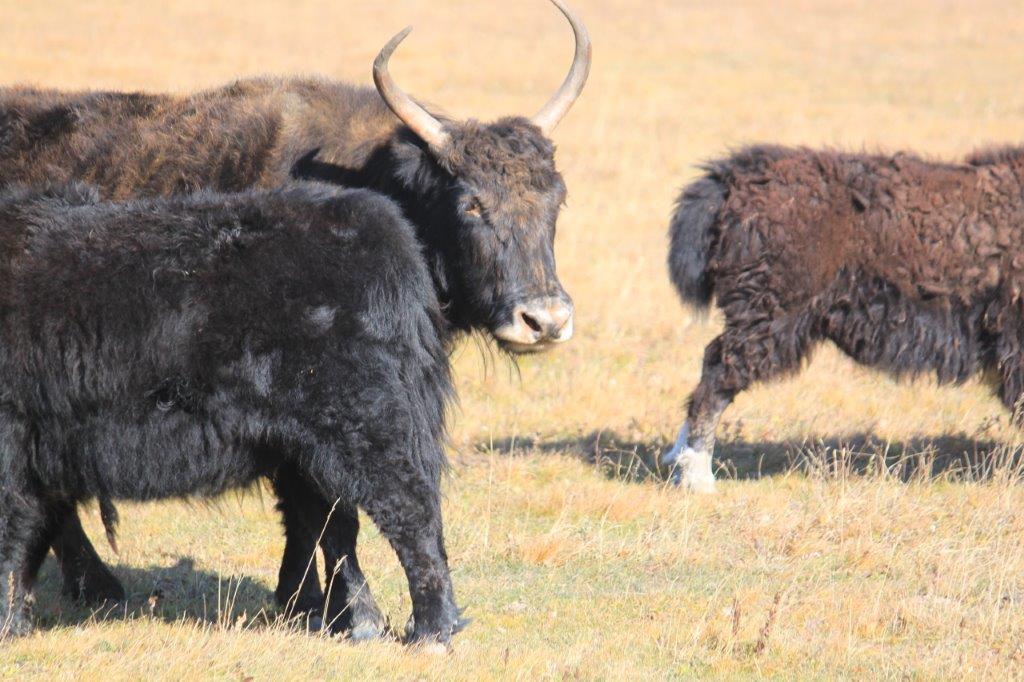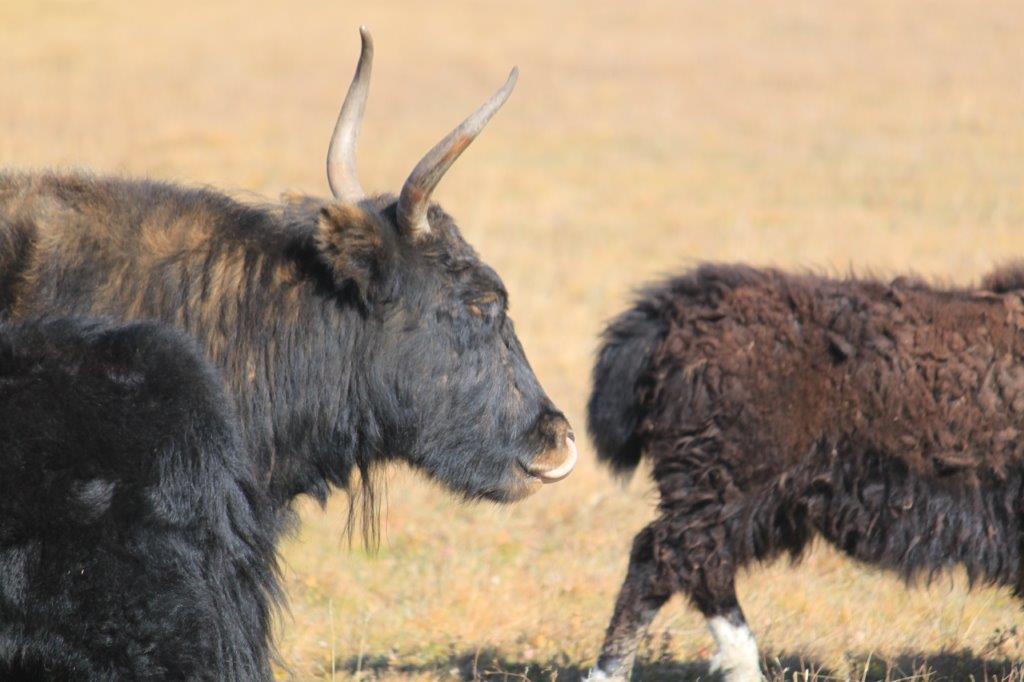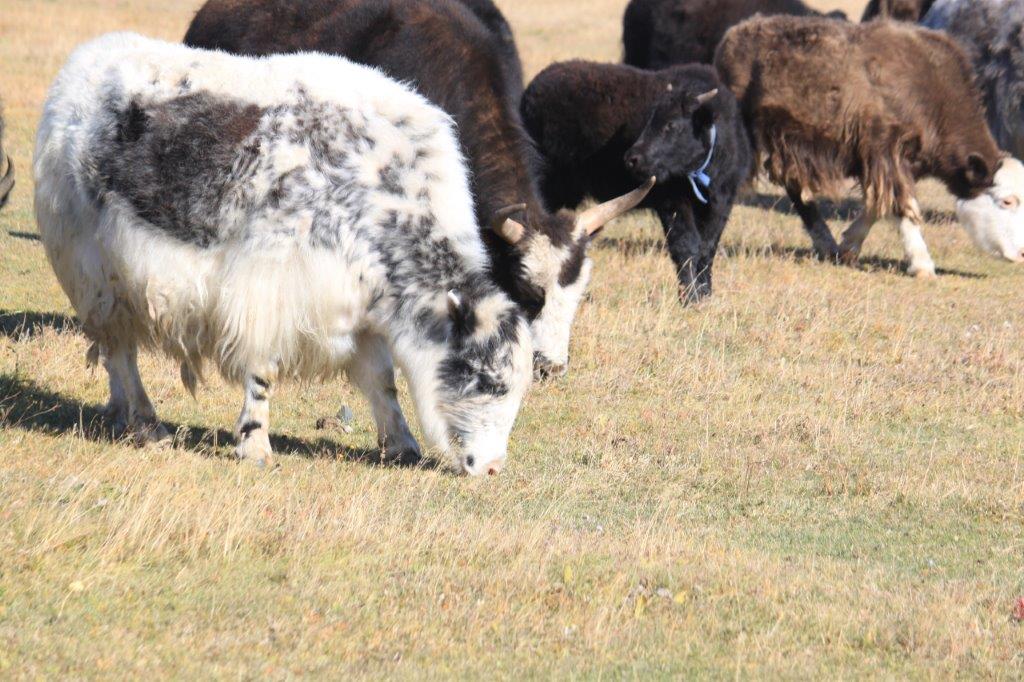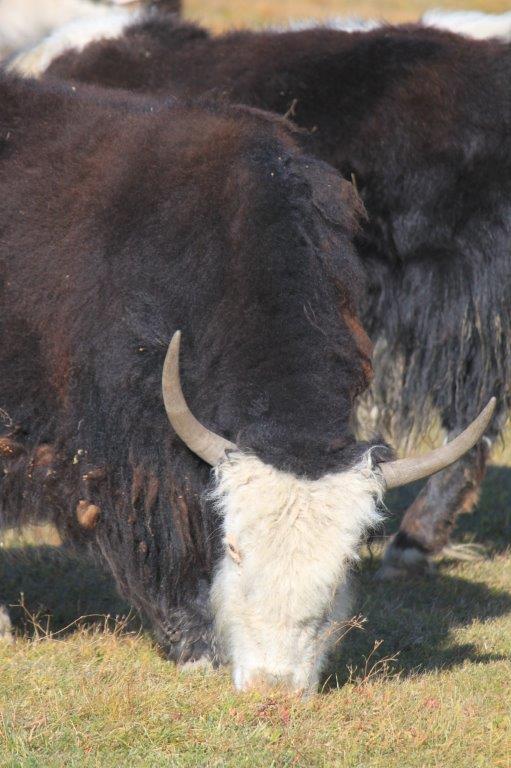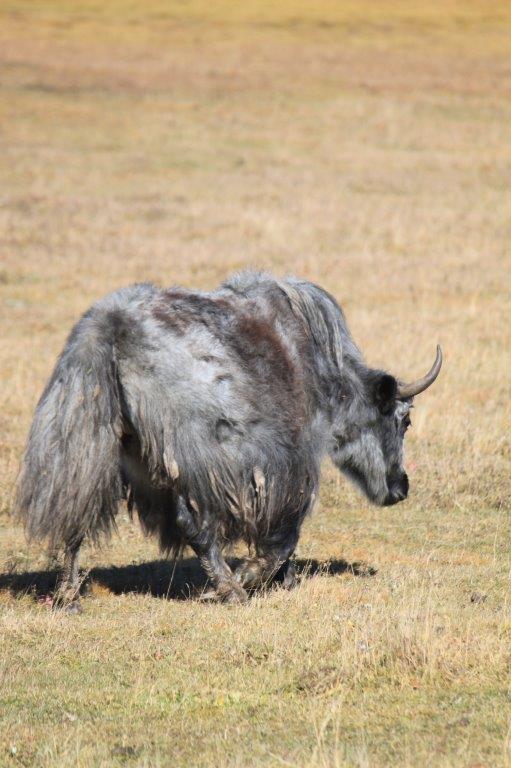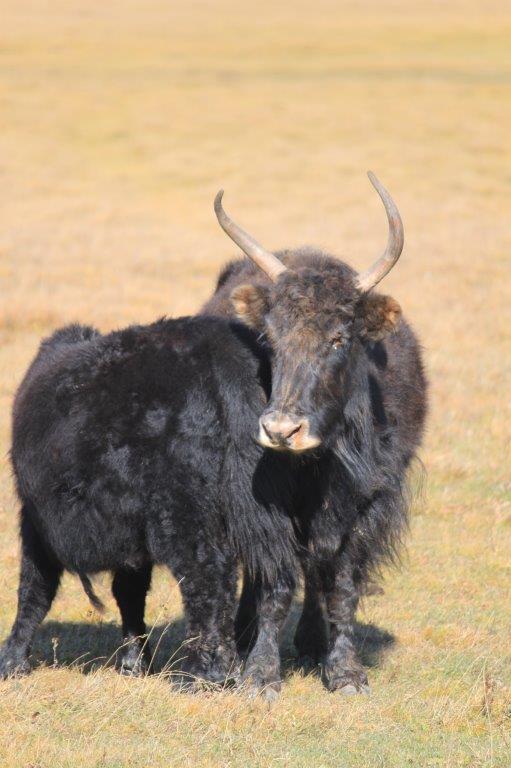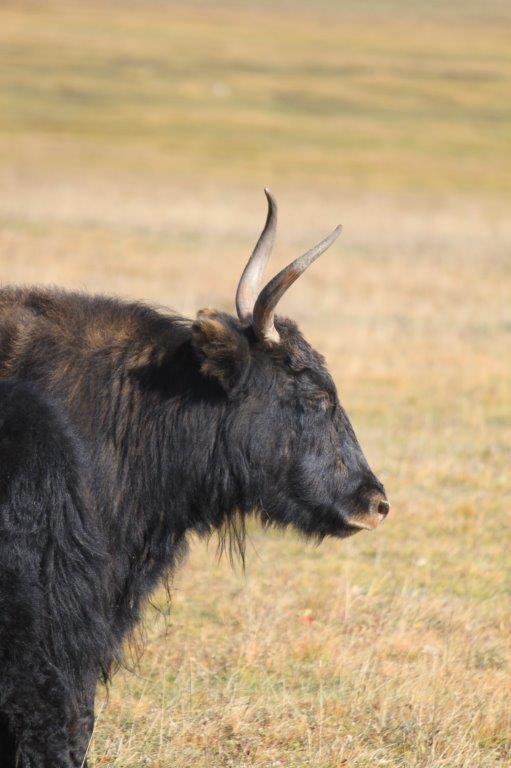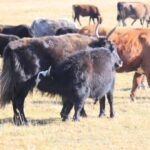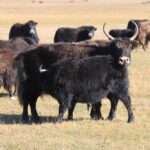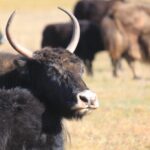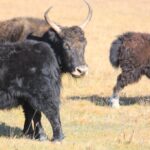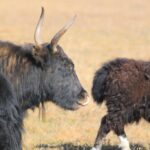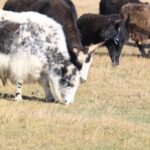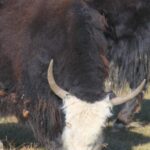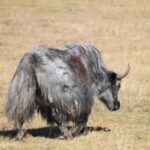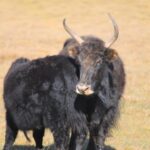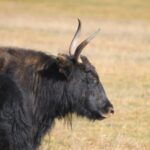On the road again: About yaks and the Mongolian town of Erdenet
The Wandelgek awoke early, it had been a cold, clear night, but now the sun had come up temperatures rose quickly.
After a humongous yawn, The Wandelgek went for a quick breakfast and then it was time to start another section of the roadtrip. The sky was clear blue with a few thin, scattered clouds in it.
Soon The Wandelgek was driving again through this almost empty Mongolian land. This time he drove even further west. This was still very much Northern Mongolia…
Lots of Mongols that do not live in cities, are cattle herding nomads. After a while The Wandelgek noticed these sheds that were probably used to temporarily house or collect cattle, like yaks, horses, cows, goats and sheep, whenever this was practically necessary, e.g: at times when cows or horses needed milking or when sheep needed a shave. There was a roofed shelter and a fenced outdoor area.
Many people who’ve never been to Mongolia, think of it as a country full of grasslands and as flat as a pancake, but it really isn’t. In the north and west are mountains, in the south is the large Gobi desert and in between are lower mountains and hills. In the valleys between those hills are those large grasslands…
Beneath is another hill. I love that tree, probably a birch tree with those leaves ablaze…
Somewhere halfway there was this giant arch, not far from the road, probably the border of the municipality or province of Erdenet…
It was a beautiful location near a small river and a good spot fo a coffee break…
Travelling here on the road in a mini van, made The Wandelgek remember travelling through Tibet a lot. I travelled there in Toyota 4-wheel-drives though. But the landscape had some similarities. In Tibet there were much more mountains and much less/almost no horses, because of the higher altitude, but I remember very well all the different colors of the rock scapes. Here too all those colorschemes were fighting eachother for a spot on the canvas.
Now The Wandelgek was driving through a large, broad valley with lots of grass and thus there were cow, sheep and horse herds roaming through the valley.
This was a special picture of the electricity lines above. They are dark, but exactly at this moment the sunbeams came in at such an angle that the lines reflected it as white light…
This large herd of sheep was grazing in the valley as well. It had to cross the road just as the bus arrived…
Another herd of cows and bulls…
Now The Wandelgek had arrived in the suburbs of Erdenet.
Erdenet
 Erdenet (Mongolian: Эрдэнэт, literally “with treasure”) is the second-largest city in Mongolia, with a 2017 population of 97,814, and the capital of the aimag (province) of Orkhon. Located in the northern part of the country, it lies in a valley between the Selenge and Orkhon rivers about 240 km (149 mi) (as the bird flies) northwest of Ulaanbaatar, the capital. The road length between Ulaanbaatar and Erdenet is about 370 km (230 mi).
Erdenet (Mongolian: Эрдэнэт, literally “with treasure”) is the second-largest city in Mongolia, with a 2017 population of 97,814, and the capital of the aimag (province) of Orkhon. Located in the northern part of the country, it lies in a valley between the Selenge and Orkhon rivers about 240 km (149 mi) (as the bird flies) northwest of Ulaanbaatar, the capital. The road length between Ulaanbaatar and Erdenet is about 370 km (230 mi).
History
Erdenet Mining Corporation
The city hosts the fourth largest copper mine in the world. The Erdenet Mining Corporation is a joint Mongolian-Russian venture, and accounts for a majority of Mongolia’s hard currency income. Erdenet mines 22.23 million tons of ore per year, producing 126,700 tons of copper and 1,954 tons of molybdenum. The mine accounts for 13.5% of Mongolia’s GDP and 7% of tax revenue. About 8,000 people are employed in the mine.
Infrastructure
Erdenet is linked to Ulaanbaatar, the capital of Mongolia, and to the towns of Darkhan and Bulgan by a paved road and is easily accessible by bus several times each day. The distance to the capital where the nearest airport is situated amounts to 370 km (230 mi) and travel by car takes about eight hours. Train connections between Erdenet and Ulaanbaatar are less comfortable as there is only one train per day covering the distance in 11 hours.
The Mall
Near the town center was a large mall where stocks could be replenished…
They had a food department but they also sold clothes, household stuff, books and electronics, e.g.: computers.
1,999.990 Tugriks (the Tugrik is the Mongolian currency and it is barely or not used/accepted in its neighbouring countries). 1 Euro is about 3,491 Tugrik. 1 Dollar is about 2,853 Tugrik, 1 British pound is about 3,874.
This computer would cost me about 600 euros.
Dinner
Erdenet is an excellent location to do some grocery shopping and to go to one of the restaurants for breakfast or dinner…
The Wandelgek had some soup and a Tiger beer, which he had previously been drinking in Vietnam.
The last pic does not show marshmellows, but tiny napkins to clean the hands ??
After a really nice dinner the minibus drove on. Between Darkhan, Bulgan, Erdenet en Ulaanbaatar are paved roads and the next part of the roadtrip was towards Bulgan.
Awesome to see such a road dissapearing in the distance, knowing that you will be in that distance too in a few minutes…
Driving on for a few hours, passing gers dotted in the landscape, the driver suddenly hit the breaks.
There was a large herd of cows …quite near the road and there were even calves walking around, but that was not the reason for the driver to stop so suddenly..
…and bulls…
…and there were even calves walking around quite near the road…
…, but that was not the reason for the driver to stop so suddenly. He pointed with his finger towards the cows and then The Wandelgek saw what he was trying to make us aware of: Yaks!
Yaks
The domestic yak (Bos grunniens) is a long-haired domesticated cattle found throughout the Himalayan region of the Indian subcontinent, the Tibetan Plateau, Northern Myanmar, Yunnan, Sichuan and as far north as Mongolia and Siberia. It is descended from the wild yak (Bos mutus).
There was a herd of yaks walking near the road. Beautiful animals which The Wandelgek had seen before in Tibet….
Yaks have long haired fur and much longer horns compared to bulls and cows and because of that thick fur, they are able to live at higher altitudes where winters are colder, like in Tibet and they can live up north in Mongolia and even in Siberia where it gets real cold in winter as well….
The hairs of the yak fur are used to create the felt layers that are used to build gers. In Tibet every single part of the yak is reused, but in Mongolia I’m not sure whether that is done too. In Mongolia there are lots of other animals that are herded and used by the Nomads. The Tibetans drink yak butter tea, which is salty, high on fats and calories and very nutritious. This is a good thing for people living on that high altitude (between 3.500 and 5.000 metres above sea level. In Mongolia people live on a much lower altitude and the nomads mainly drink kumis which is fermented horse milk.
After a while The Wandelgek was ready to move on towards the next awesome destination…


